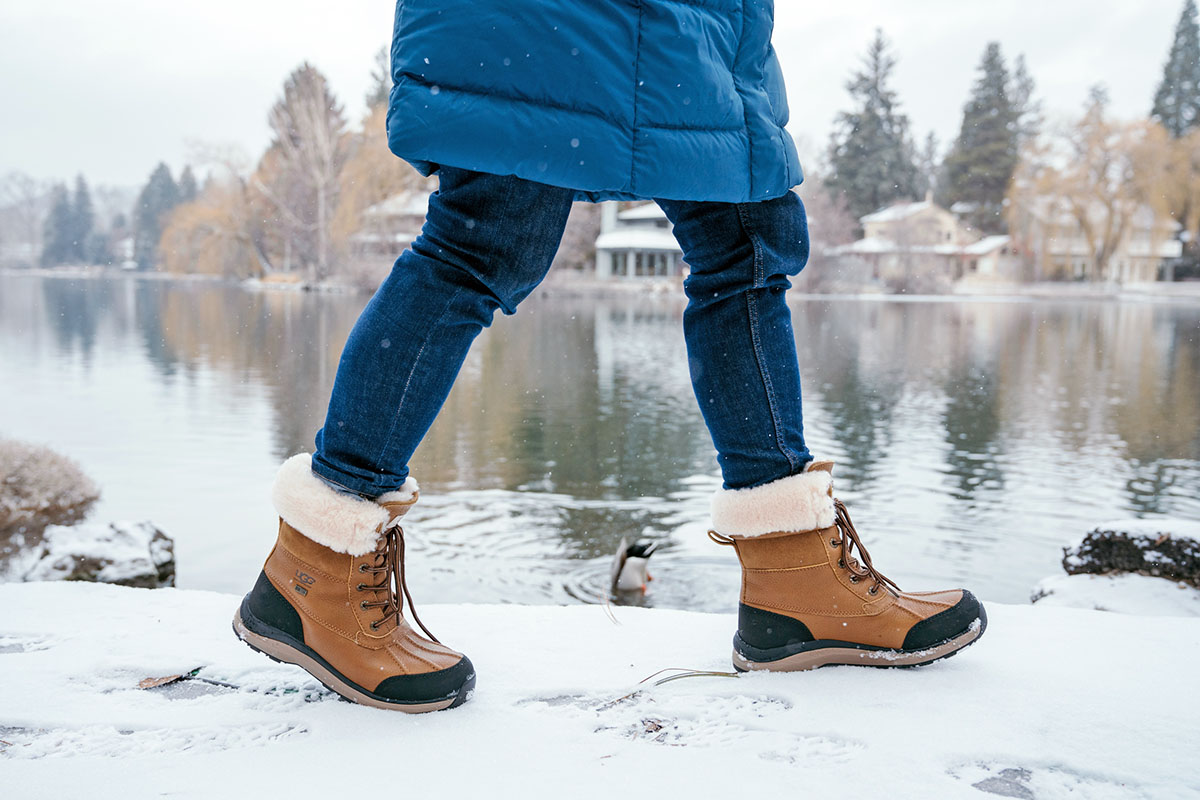
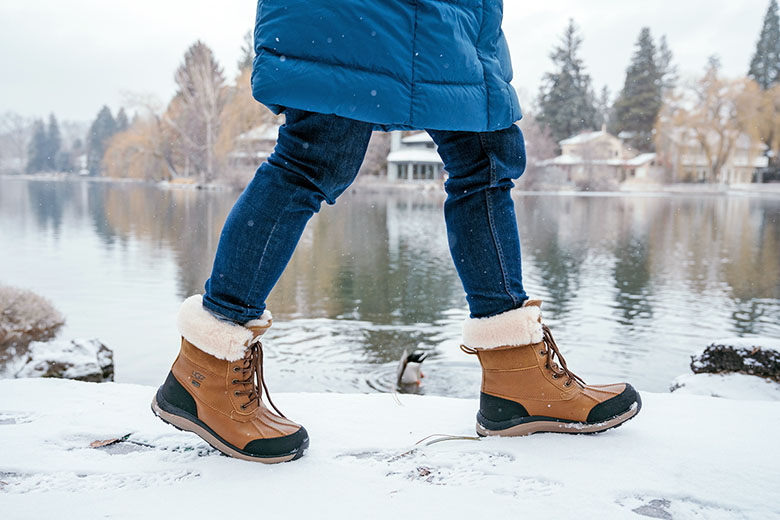
Switchback Travel (Adam McKibben)
Winter weather calls for capable footwear, whether you're working outdoors, snowshoeing, or commuting to work. The good news is there's no shortage of women's-specific designs to keep your feet warm and dry no matter the conditions. Our team of female editors took to the snowy streets and slopes to come up with our favorite women's winter boots of the 2025 season. Our picks run the gamut from casual models great for everyday wear to winter hikers and tall, neoprene work boots. For more information on the lineup and on how to find your perfect pair, check out our comparison table, buying advice, and learn more about our testing practices below the picks, And for a wider look at the market, we've also put together a round-up of the best winter boots, which covers both men's and women's styles.
Editor's note: We updated this guide on March 28, 2025, to switch the Blundstone High Top to the All-Terrain Thermal, add more photos from testing, remove a couple of discontinued models, and ensure all links, prices, and specs were accurate at the time of publishing.
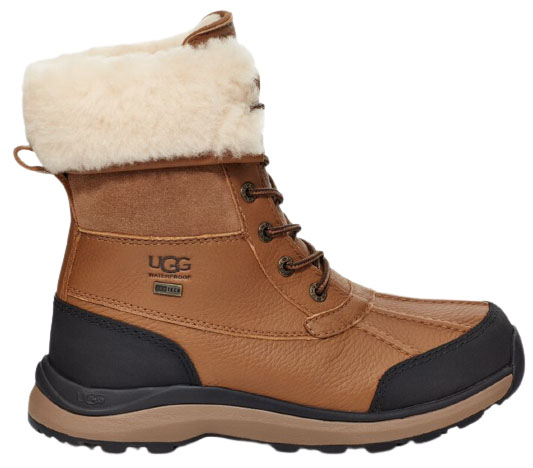 Category: Casual
Category: Casual
Insulation: 200g wool
Shaft height: 8 in. (9.5 in. unfolded)
What we like: Premium materials, versatile cuff design, and a great quiver-of-one boot.
What we don’t: Expensive.
Ugg might not be the first brand that comes to mind when selecting a sturdy winter boot, but their Adirondack III has been our go-to choice for four winters running. You get great protection from rain, slush, and snow with a premium leather and suede upper backed by a waterproof membrane, and the natural wool liner is plush, warm, and even insulates well when wet. It’s not often that we see wool used in a serious winter boot, but the Adirondack’s design lends a great deal of versatility: When the cuff is rolled down, you get a playful, casual boot that’s at home over jeans or leggings. Leave it fully extended, and the Adirondack is a traditional leather model with no-frills warmth and functionality.
Keep in mind that temperature ratings can be misleading: Ugg gives the Adirondack III a -25 degrees Fahrenheit minimum, but don’t go racing to the Arctic in this boot. In our testing, it held up in snow, puddles, and cold temperatures as low as 15 degrees. Its shorter, more casual build gives up a bit in the way of coverage and warmth but lends greater freedom of movement for activities like shoveling the driveway or walking the dog (the Adirondack III is also available in a tall version for a whopping $75 more if you know you want more coverage). And with the last update, the III boasts a much grippier sole, which solidifies it as a capable quiver-of-one design. You’ll spend up for the premium materials, but for a warm and stylish boot that’s at home both in town and in the mountains, the Adirondack III gets our top pick for the season yet again.
Read more: Ugg Adirondack III review
See the Ugg Adirondack III
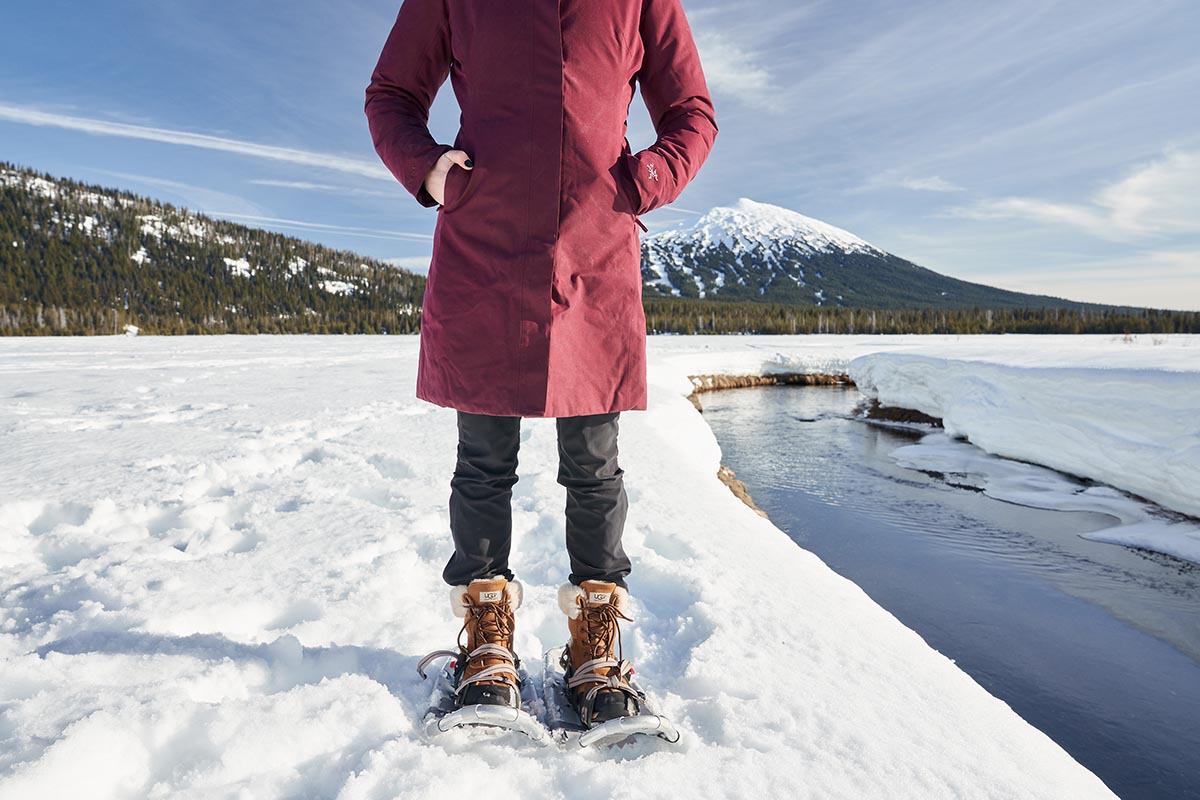
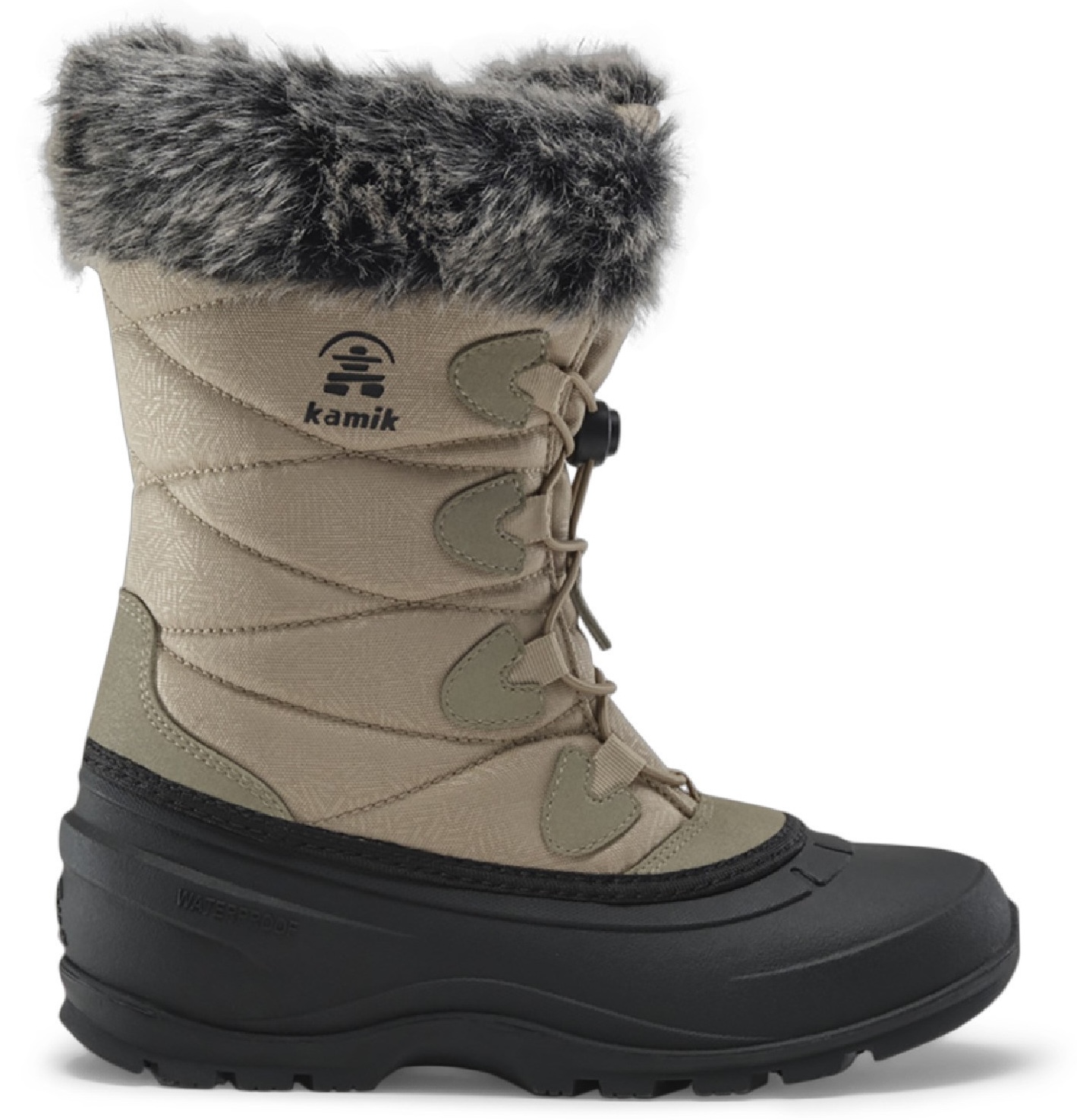 Category: Casual
Category: Casual
Insulation: 145g Heat-MX synthetic
Shaft height: 11.75 in.
What we like: A very functional winter boot at a great price.
What we don’t: Build quality is a step down from many pricier models.
There is a lot to like about the women’s Momentum boot from Kamik. First, it’s clearly built for winter use with a tough rubber lower, sturdy nylon upper that’s seam-sealed (a rarity at this price point), and a healthy 11.75-inch shaft height for good clearance from snow and water. Second, despite all of the aforementioned features, the boot looks the part for everyday use and comes in a wide variety of colorways. Finally, we love the price of the Kamik, which undercuts much of the competition by at least $50 to $100. All told, it’s a hard-to-beat combination of versatility and value.
Keep in mind that the Momentum is only moderately warm with its synthetic Heat-MX insulation and faux-fur collar. Further, the nylon upper feels somewhat plasticky and a step-down quality-wise from many of the pricier options here, and it can be more prone to absorbing moisture (an issue in wet snow or when stepping through puddles). You also can't dial in the fit as nicely as with the Ugg above and Oboz Bridger below due to the lacing stopping short of the cuff, although the bungee system is fast and easy to use. But overall we love the versatility of the Momentum, and it’s one of the best values on the market. For another popular budget boot with a mid-height shaft, check out Columbia’s Ice Maiden II below.
Read more: Kamik Momentum 3 review
See the Kamik Momentum 3
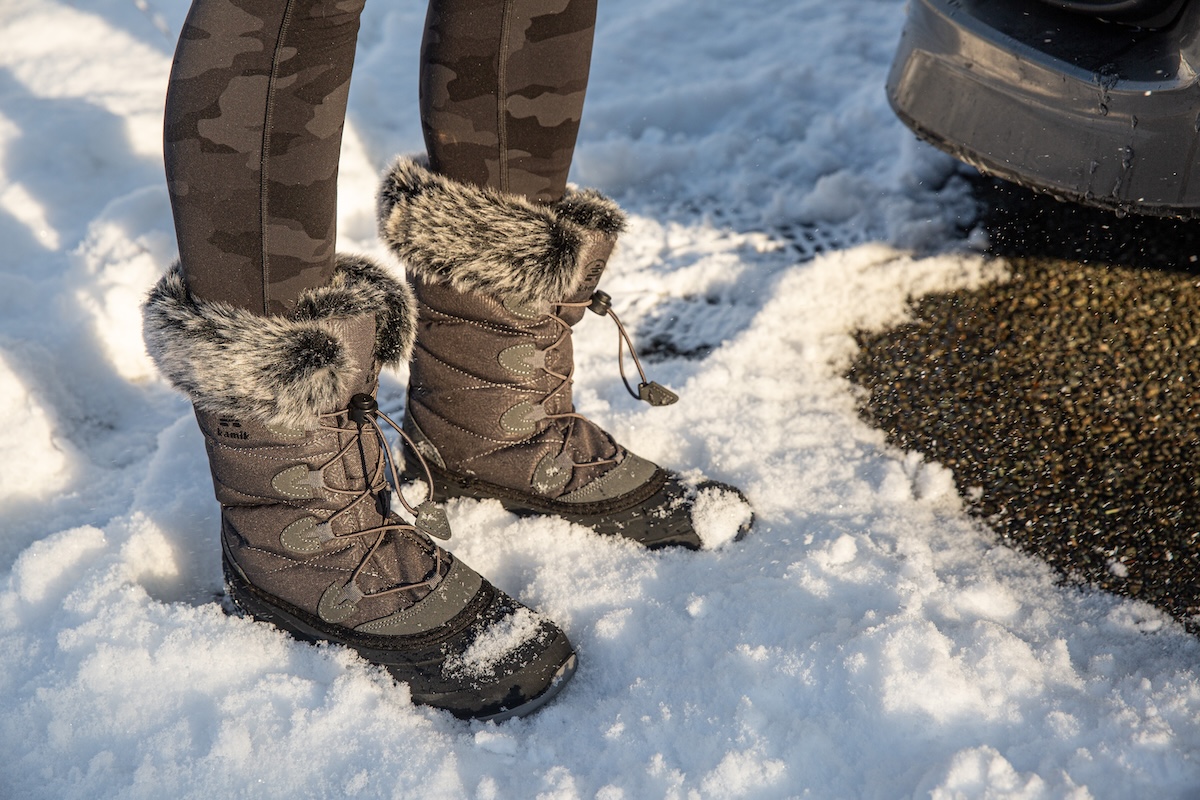
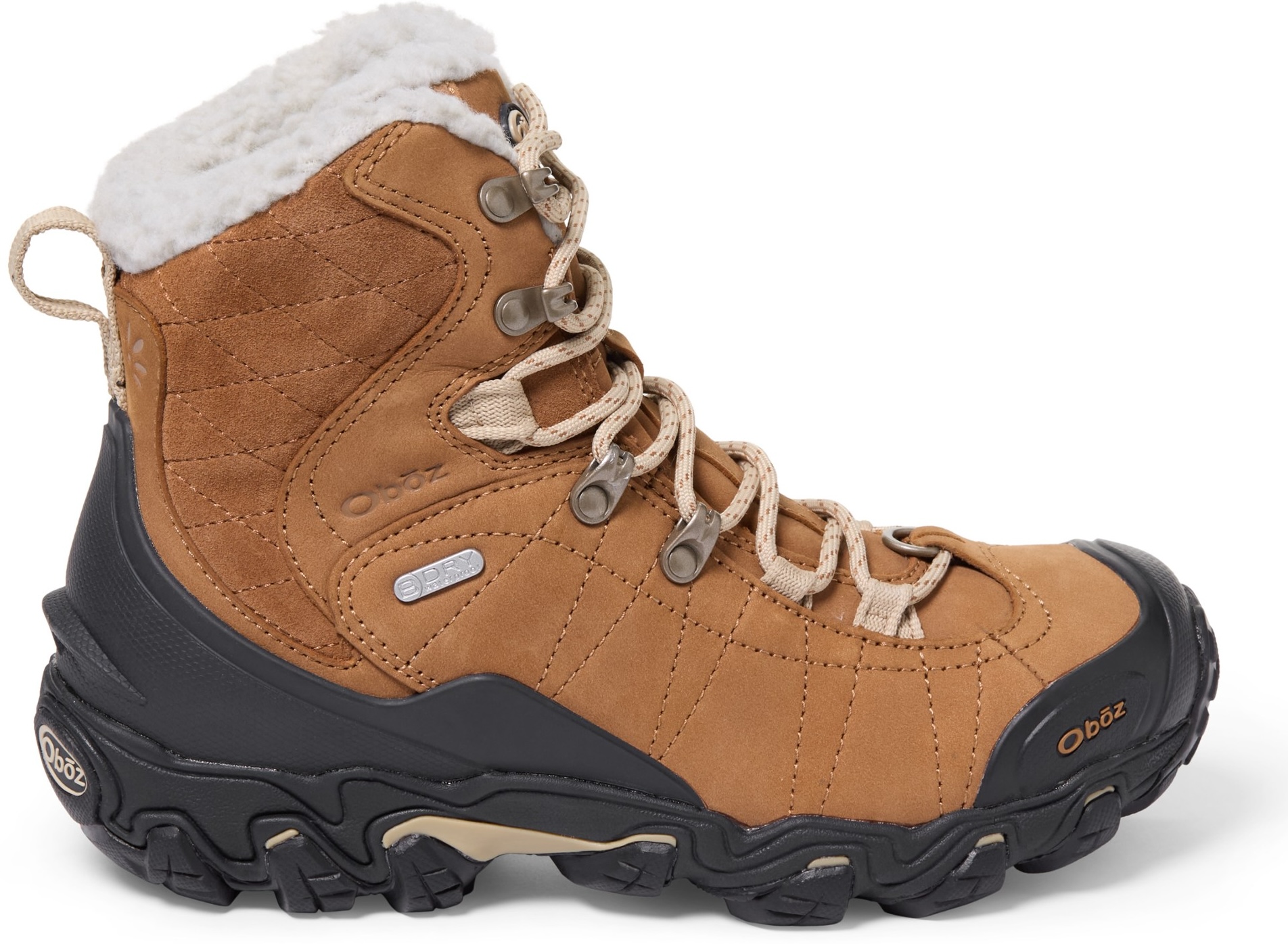 Category: Winter hiking
Category: Winter hiking
Insulation: 200g 3M Thinsulate
Shaft height: 7 in.
What we like: Light, reasonably nimble, and not overly insulated for active use.
What we don’t: Fit can be challenging; not as warm as other boots here.
The Oboz Bridger 7” Insulated takes one of our favorite hiking boots—the popular Bridger—and gives it a thorough cold-weather treatment. To increase the boot’s protection from snow, the Bridger 7” is taller by a few inches and features 200-gram 3M Thinsulate insulation along with a cozy and stylish wool collar. You also get helpful hiking-specific features like a gaiter ring at the forefoot and a rubber tab at the heel for removing the boots hands-free (this also helps with securing snowshoes). And we were happy to see that Oboz retained most of the flagship Bridger’s light and nimble feel, and the lacing system does a great job providing a secure fit. All told, it’s a solid pick for long winter walks, hikes, and snowshoeing.
Where the Bridger 7” Insulated falls short is in extreme conditions. The relatively light insulation nicely balances warmth and breathability when on the move but will leave your feet cold on frigid days and during lower-output activities (that said, Oboz also makes a 9” version with 400g insulation for only $10 more). We’ve also found that the stiff upper takes some time to break in, and the boot can run a little narrow in the heel (keep this in mind if you’re planning to wear heavyweight socks). Finally, while the outsole grips well on soft snow and hard-packed dirt, the lack of sharp lugs results in poor traction on ice (don’t forget your winter traction devices). These downsides hurt the Bridger Insulated’s all-around appeal a bit, but it’s nevertheless an excellent performance choice if you love to hike in the colder months.
See the Oboz Bridger 7" Insulated
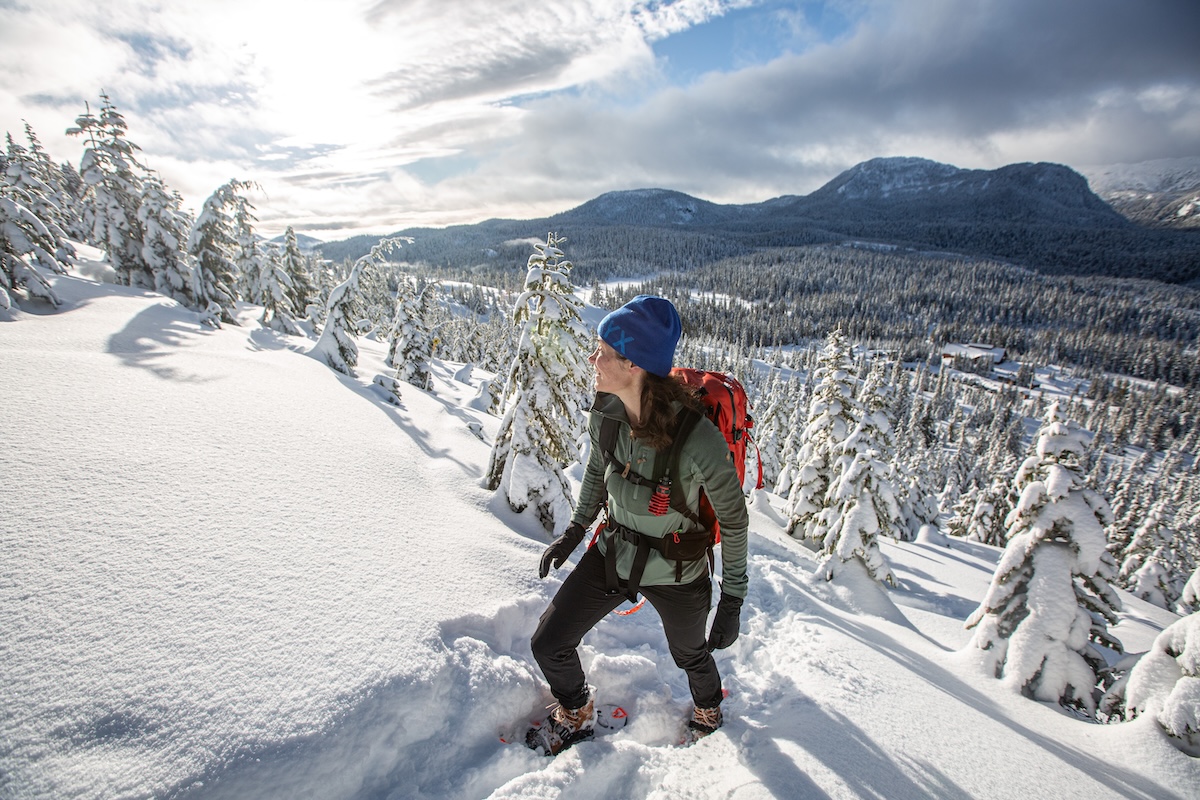
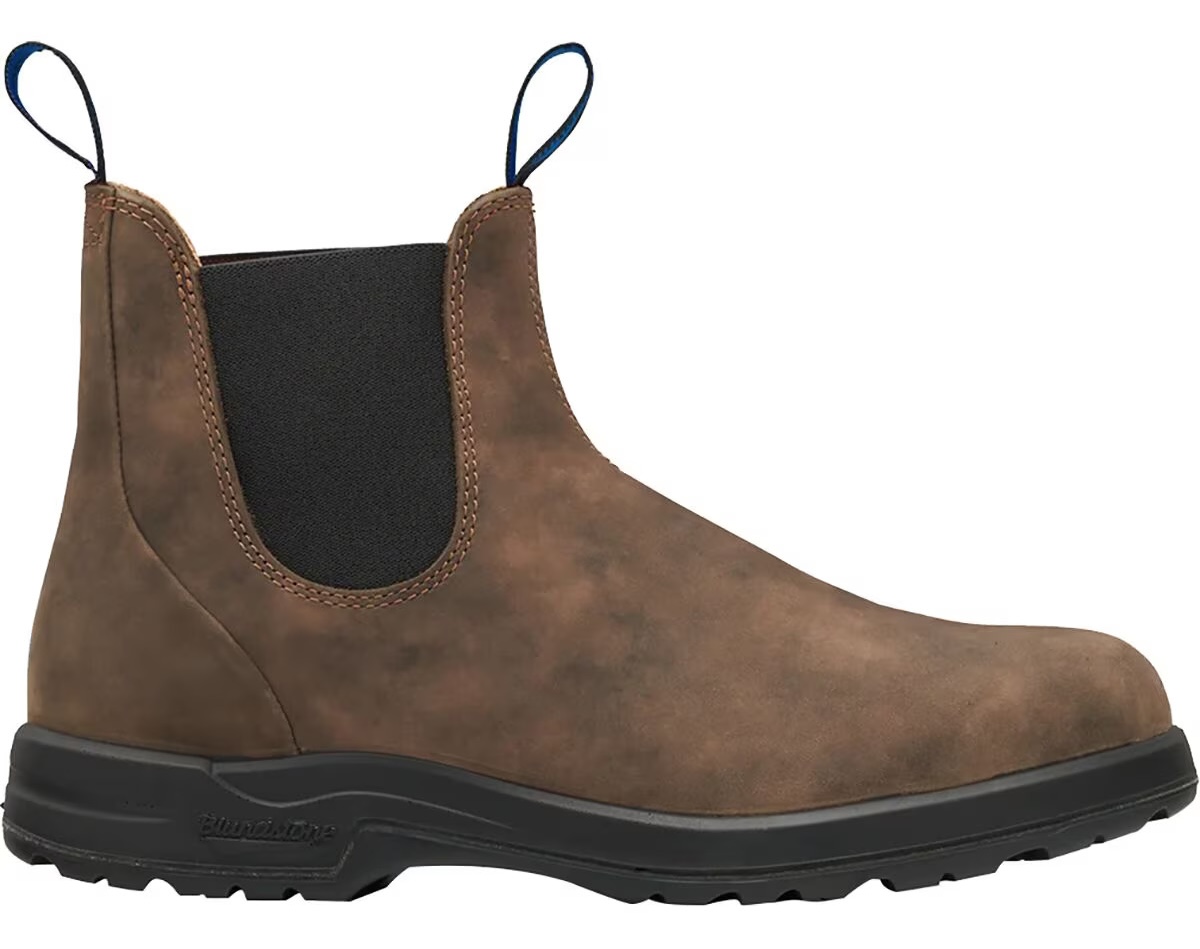 Category: Casual
Category: Casual
Insulation: 200g Thinsulate, sheepskin insole
Shaft height: 6 in.
What we like: Stylish, top-notch craftsmanship, and improved traction over classic version thanks to a Vibram outsole.
What we don’t: Expensive and short height limits winter versatility.
We love a good Chelsea boot, and Blundstone has led the charge in this arena for many years now—deservedly so. One member of the Switchback staff has two pairs that she consistently cycles through, depending on the season: the regular version for when it's warmer and dryer, and the All-Terrain Thermal here for winter cold and wet. The All-Terrain Thermal sets itself apart from the standard version with waterproof leather, water-resistant elastic and latex seams, a 200g Thinsulate lining, a grippy Vibram outsole, and a super cozy sheepskin insole. Every element is well-considered and expertly crafted, and while this is a more casual, urban boot, it can hold its own outside of that, too. We've seen Blundstones on farms, trails, art studios, and more. If you take time to condition and weather-proof the leather, this is a shoe that can be with you for many, many years.
Despite the (much warranted) high praise for this boot, it does have a lower shaft height than more snow-focused winter options here. And while the Vibram sole is indeed very grippy, it doesn't have the kind of deep lugs meant for shedding lots of snow and mud. It's also a good idea to factor in some time for breaking the All-Terrain in, as would be expected of any high-quality leather shoe. The tight opening takes some yanking to get a foot inside, especially when the leather is brand new, but thankfully the pull loops on the front and back are strong enough to take it. Finally, the price point for Blundstones is quite high, but with proper care, you can easily have this boot in your closet for a decade or more. If you don't need the extra warmth and drip, you can save $55 to $65 with the non-thermal, non-all-terrain version, and the sheepskin insoles can be purchased separately if you want to add one later (though it's recommended to size up if you plan to do this). All told, this isn't the winter boot for super snowy days, but it's a stylish classic that we've never regretted owning.
See the Women's Blundstone All-Terrain Thermal
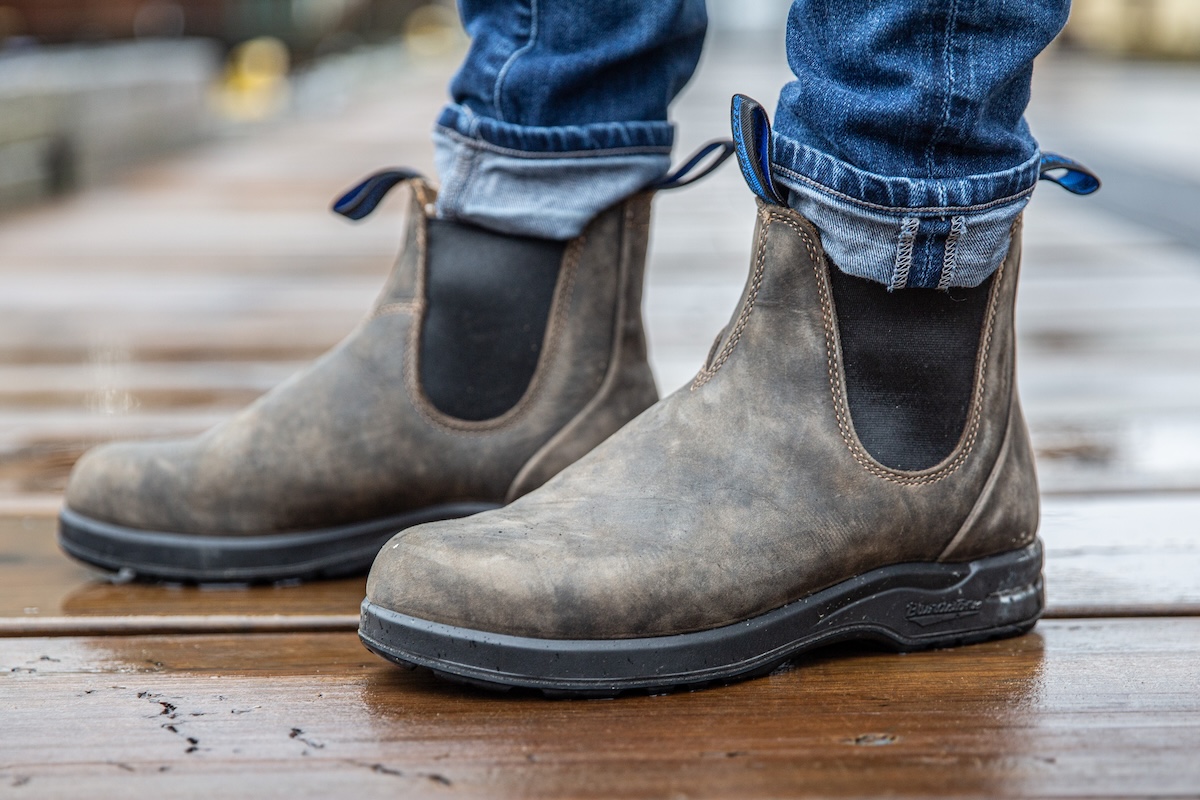
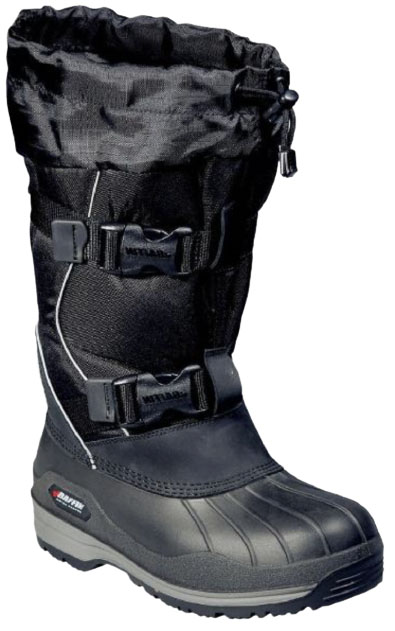 Category: Work
Category: Work
Insulation: 8-layer lining
Shaft height: 12 in.
What we like: Truly ready for the coldest temperatures.
What we don’t: Not night-out-on-the-ski-town compatible.
If your winter plans include activities like hunting, ice fishing, or perhaps an arctic expedition, then the Baffin Impact should be on your short list. While this boot will be over the top for most folks, those in locations like Alaska, Montana, or the northern Midwest are in prime territory for the Impact's eight-layer insulation made of foam and polyester (including the removable liner) that's encased in a durable nylon shell. Baffin has an in-house cold comfort rating system, and the Impact falls in their "Polar Rated" category, which is their highest designation meant for the coldest climates on earth. While our testers haven't taken these boots to anywhere that extreme, we know of users who have reported staying toasty down to -50 degrees Fahrenheit.
As you might expect, the Impact isn't a good choice if you'll be in milder winter temps or plan to be more than moderately active. Not only is it supremely warm, but it's heavy at well over 5 pounds, isn't breathable, and is overall bulky with a 12-inch shaft, large buckles, and thick materials. While the Impact will be fine paired with most snowshoes or traction devices, this isn't an agile boot for casual daily use outside of some key geographic locations—nor is it very stylish. For a step down in warmth and bump up in style, check out the Escalate X or Chloe (below).
See the Baffin Impact
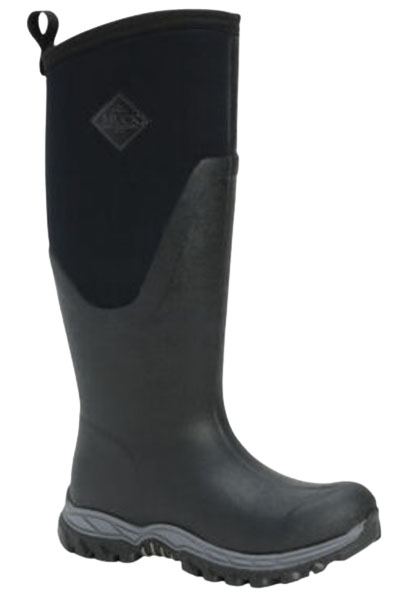 Category: Work
Category: Work
Insulation: 5mm neoprene & fleece lining
Shaft height: 16.9 in.
What we like: Fantastic protection, traction, and warmth.
What we don’t: Poor breathability; difficult to get on and off.
If winter strikes hard in your neck of the woods, the best daily driver might be a work boot like the Muck Boot Arctic Sport. With a tall16.9-inch shaft height, a waterproof rubber upper, and a thick-yet-flexible neoprene collar, the Arctic Sport is ready for serious outdoor chores, whether you’re working on the ranch or shoveling your suburban driveway. We’ve worn the Arctic Sport throughout the winter in Washington’s Central Cascades and Tahoe's Sierra Nevada, and it’s handled it all with aplomb, from waist-deep snow to spring slush. In addition to keeping the elements out, the boot offers solid warmth (Muck Boot rates it from -40 to 40 degrees F) and excellent coverage—once you get used to the knee-height collar, it's hard to go back.
As is to be expected with a rubber boot, the Arctic Sport isn't breathable and can get swampy if you're exerting yourself or the outside temperature is too warm. The tall, knee-height version also isn't the easiest to get on and off, though there's a 12.2-inch Mid variation which is decidedly less ungainly and $10 cheaper. We've also noticed that the outsole on the Arctic Sport isn't the best on ice—for that, we'd recommend the $185 Arctic Ice Mid with its upgraded Vibram Arctic Grip All Terrain sole. Bottom line: The Muck Boot brand has some of the best options on the market for working outside in mud, rain, and snow.
See the Muck Boot Arctic Sport II Tall
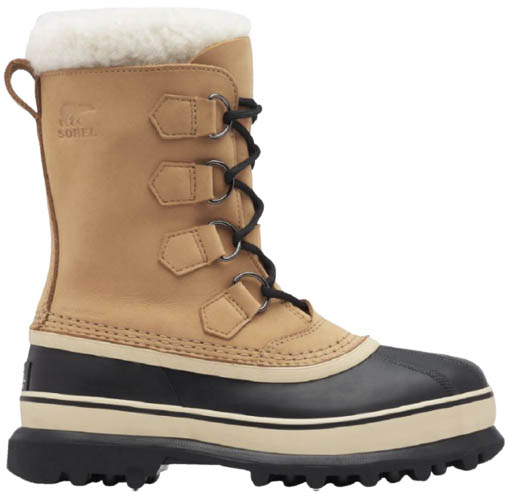 Category: Casual
Category: Casual
Insulation: 9mm ThermoPlus
Shaft height: 9 in.
What we like: Timeless looks and cozy interior.
What we don’t: Heavy at almost 3.5 pounds for the pair.
It's likely that if someone asked you to imagine a quintessential winter boot, you'd picture something pretty close to the Sorel Caribou. This classic design is tried-and-true for a reason, expertly balancing comfort, performance, and style. With 9 millimeters of insulation, a 9-inch shaft height, durable leather and rubber, and a cozy Sherpa pile cuff, slushy puddles and snowdrifts won't cause you a second thought. And while many brands are turning to synthetic insulation to reduce weight and bulk, the Caribou has stayed true to its roots with its removable felt liner (a feature we love, as the ability to ditch the liner is a game-changer if the interior happens to get wet in deep snow).
The Caribou is certainly a great boot to have in your closet for all-around winter use, and its 9-inch shaft hits a Goldilocks height—tall enough to handle some serious snow but not so tall as to become truly ungainly. That said, it's not an optimal choice if you plan to be walking long distances, as the pair is a full pound heavier than the Ugg Adirondack above. The classic Pac-boot design is also wide and can make things like driving awkward (Sorel’s Winter Carnival is a lighter-weight and slightly more streamlined alternative). Finally, at $200, the Caribou will cost you almost twice as much as the Kamik Momentum above, although you do get what you pay for with Sorel’s emphasis on quality. These gripes aside, the Caribou is a worthy pick for everything from outdoor chores to après ski, and it’s hard to argue with its iconic and timeless style.
Read more: Sorel Caribou review (men's version)
See the Sorel Caribou
 Category: Casual
Category: Casual
Insulation: 200g Heatseeker Eco
Shaft height: 10 in.
What we like: Versatile and good-looking; newest version adds 2 inches to the shaft height.
What we don’t: The V is heavier than the previous version; top lace hooks can catch on each other when walking.
Like the Ugg Adirondack above, the North Face’s Shellista is competitively priced and hits a great middle ground for anything from shoveling the driveway to winter hikes or walking around town. Rubber covers more of the foot on the V than the prior version, effectively shedding water and snow, and 200-gram Heatseeker Eco insulation and soft cushioning around the ankle provide a nice dose of warmth and coziness. The IV featured improved traction over prior iterations, but the V is still up for debate—the treads don't appear as well designed, but we're still in the testing process and will report back. In terms of styling, we like the classy leather and faux-fur upper, and the relatively low profile makes the Shellista equally easy to layer over leggings or under snow pants.
Paired with warm, boot-height socks, you can expect the Shellista to be comfortable into the high teens and low 20s Fahrenheit, but the lightweight build has its limitations should the mercury really drop. For deep-winter conditions, we’d stick with boots like the Baffin Impact or Sorel Caribou above. We took issue with the IV’s lower shaft height, but the redesigned V adds another 2 inches, and we're here for it. The V also boasts a totally new lacing system, with triangle ring-and-hook hardware that extends much farther back on the shaft instead of traditional eyelets—though it is a bit tricky to pull the laces tight. That said, it does help the boot stay tied more effectively, as the laces are able to lock in securely. Overall, the Shellista undercuts the Adirondack in price by almost $100 and checks in almost a pound lighter than the Caribou, making it a versatile and high-value choice.
See The North Face Shellista V Mid Waterproof
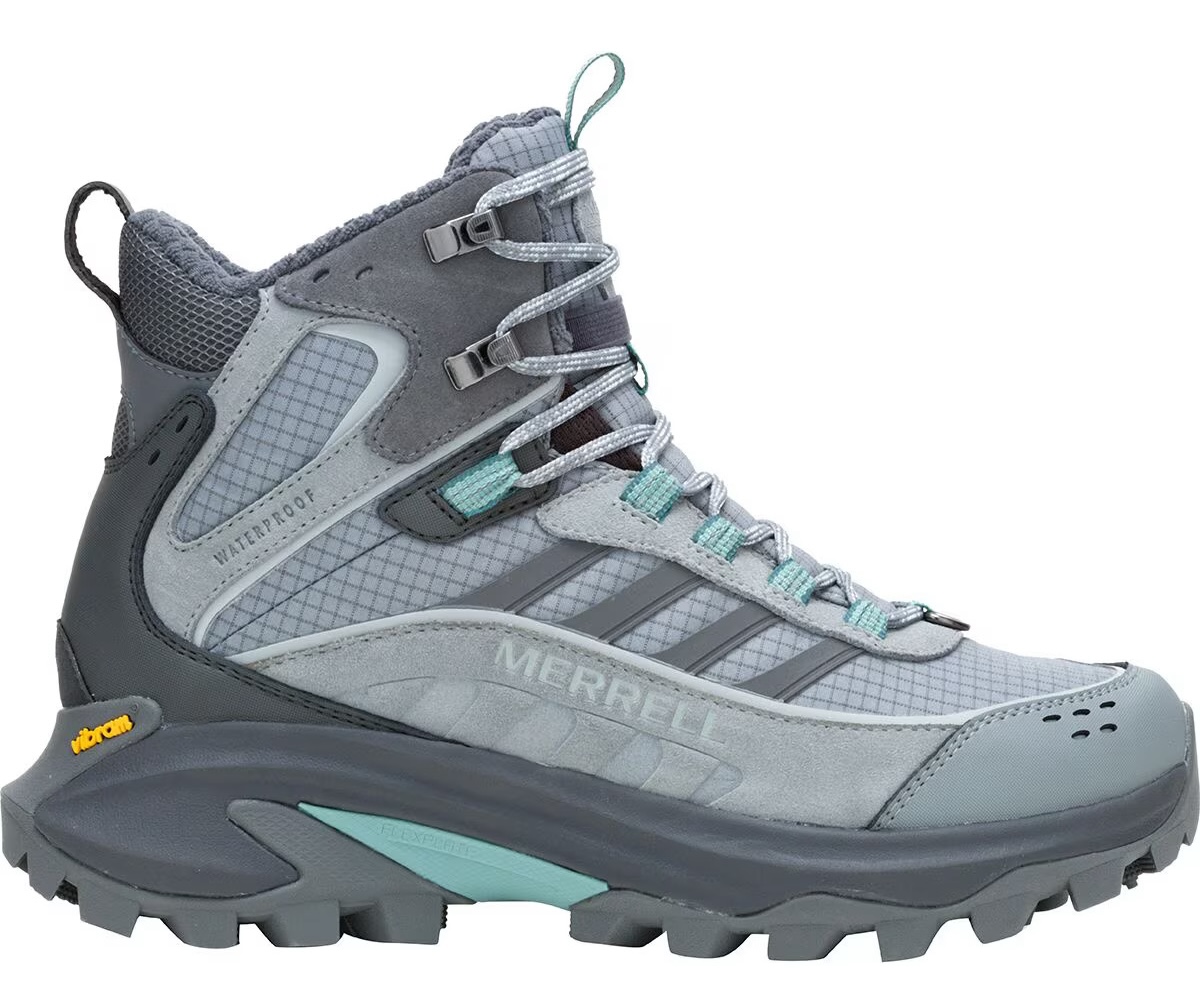 Category: Winter hiking
Category: Winter hiking
Insulation: 200g PrimaLoft Gold Eco
Shaft height: 6 in.
What we like: Warm while retaining a light weight and decently nimble feel.
What we don’t: Pricier than previous offerings in the Moab Thermo line; our top lace hook broke.
Like Oboz and Keen, Merrell is a hiking boot specialist with a number of quality winter designs that showcase that expertise. Among their newer winter trail offerings is the Moab Speed 2 Thermo Mid, which takes one of their most popular hiking boots (the Moab Speed 2) and gives it a cold-weather treatment. The Moab Speed 2 Thermo’s premium materials—including 200-gram PrimaLoft Gold Eco fill and a Vibram Icetrek outsole—offer winter-ready performance for snowy and icy trails and temps ranging from the mid-teens to low 30s Fahrenheit. And with a quality in-house membrane, the boot is also ready for slushy shoulder-season conditions (you can treat the leather with an aftermarket conditioner for even more protection). All told, the Speed 2 Thermo Mid is a solid pick for long winter walks, hikes, and snowshoeing.
For $20 less, how does the Moab Speed 2 compare to the Bridger Insulated above? Both feature similar 200-gram insulation and excellent waterproofing, but the Merrell is significantly lighter (10 oz. less per pair) with a more streamlined design and slightly shorter shaft height. This translates to an easier break-in period but also a little less protection compared to the Oboz. The Moab Speed may also have less crossover appeal for some folks as it looks decidedly more like a technical hiking boot without the stylish wool collar of the Bridger. These are small nitpicks though—we feel confident that winter hikers will be pleased with either boot, depending on style preferences and fit (the Merrell is the better choice for those with wide feet). Without a doubt, the Speed 2 Thermo is a capable utility vehicle with well-considered components and technical prowess. It's worth noting though that our top lace hook broke and was not repairable, requiring us to need a replacement. However, this strikes us more as a one-off defect than a quality issue on Merrell's end.
See the Merrell Moab Speed 2 Thermo Mid Waterproof
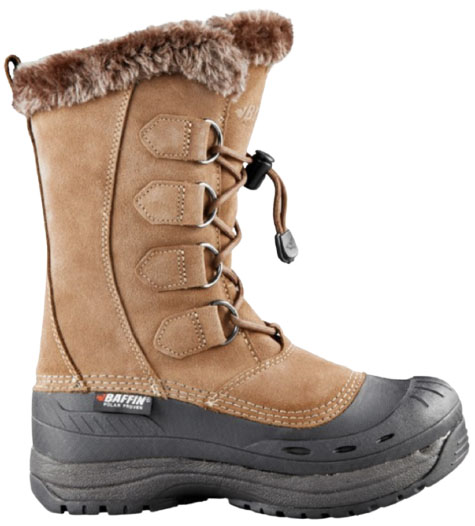 Category: Casual
Category: Casual
Insulation: B-Tek foam, Polywool blend
Shaft height: 11 in.
What we like: A great combination of warmth, style, and value.
What we don’t: Very heavy at over 4.5 pounds.
Canada-based Baffin is known for their Arctic-ready winter boots, but they also have a nice lineup of casual offerings for everyday use in the Lower 48. The Chloe here combines the warmth-capturing technology of the Impact above with a stylish, feminine silhouette for a boot that gives designs like the Ugg Adirondack and Sorel Joan of Arctic a run for their money. On the outside, you get a suede leather upper with faux fur collar, while the Polar Rubber outsole specializes in cold-weather grip on icy terrain. Under the hood, a removable inner bootie features a polyester-wool blend and thick foam lining. For an everyday winter boot that can be dressed up or down, the Chloe is well deserving of a spot in your closet.
At $195, the Chloe offers considerable savings over the Adirondack, and you get noticeably more insulation and moisture protection by way of its taller and bulkier build. But the clunky rubber sole and rand are no match for the Adirondack’s sleek duck-boot-inspired design, and with an all-in weight of 4 pounds 9.6 ounces for the pair, the Baffin is almost twice as heavy as the Ugg. In the end, it feels more akin to a boot like the Joan of Arctic below, but with a slightly better balance of performance and style and a savings of $45.
See the Baffin Chloe
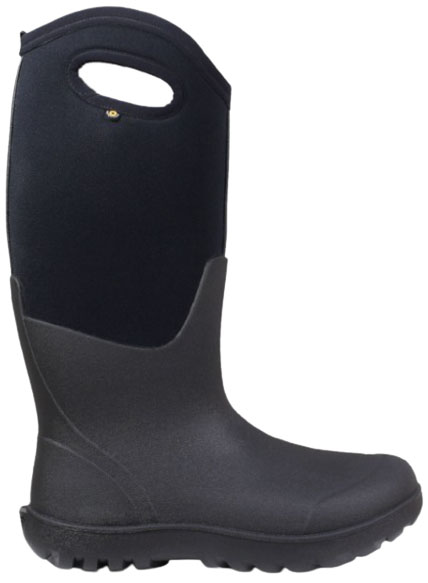 Category: Work
Category: Work
Insulation: 5mm Neo-Tech
Shaft height: 14 in.
What we like: Simple, warm, and waterproof.
What we don’t: Middling traction, imprecise fit, and heavy.
Bogs' Neo-Classic Tall takes the signature rain boot look and adds a healthy dollop of warmth and protection for cold-weather use. The 5-millimeter neoprene construction is both insulative and waterproof, and the 14-inch collar is enough to keep most water and snow at bay. Further, the Classic’s sleek profile slides on easily with integrated handles and is a breeze to clean, and we appreciate the addition of a DuraFresh odor treatment. True to its name, this boot is a classic winter choice everywhere from coastal cities to frigid rural areas in the Midwest, and the rain boot-like aesthetic isn’t out of place in the shoulder seasons, either.
The Bogs Neo-Classic Tall is great for wearing around town or working outside, but the heavy build, imprecise fit, and lack of breathability mean it’s not our first choice for hiking or all-day wear. Traction is another downside, with wavy and rounded lugs that don’t bite particularly well on soft or icy ground. And compared to the Muck Boot Arctic Sport above, the Bogs aren’t quite as high on function, with about 3 inches less coverage (plus cutouts) and a bit less warmth (the Muck Boot tacks on a fleece liner). But for $10 less, they’re arguably more practical for light outdoor work like shoveling the driveway or walking the dog around the block.
See the Bogs Neo-Classic Tall Boots
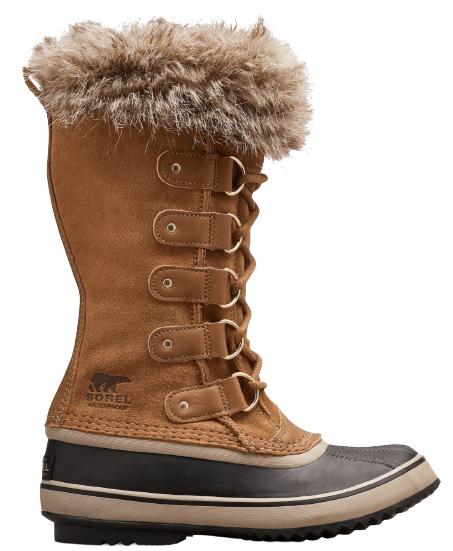 Category: Casual
Category: Casual
Insulation: 6mm felt
Shaft height: 8.75 in.
What we like: Stylish and excellent protection.
What we don’t: Expensive for the level of warmth, bulky.
A modern take on the classic Sorel boot, the Joan of Arctic offers a nice blend of function and fashion. Fully waterproof with a suede upper and seam sealing, it’s a sturdy choice for everyday wear. We’ve been pleasantly surprised by the level of protection that you get from the height and felt interior, and the removable liner makes it easy to dry the insides should they get wet in the snow. Importantly, despite its classy design, Sorel’s trademark wraparound rubber lower is ready for all sorts of use and abuse.
It’s the premium materials and good looks that make the Joan of Arctic a favorite year after year. Unfortunately, however, the relatively thin felt liner and two-piece construction don’t do a good job trapping heat. Even in temperatures just below freezing, we found ourselves surprisingly cold (we tested the Joan back to back with the Adirondack and Shellista, and it was the weakest link in that grouping). Further, the heavy and clunky design feels dated and can be cumbersome on longer walks. To be clear, the waterproofing is excellent, and the Joan of Arctic will certainly do the trick in moderate conditions, but we prefer the more well-rounded alternatives above.
Read more: Sorel Joan of Arctic review
See the Sorel Joan of Arctic
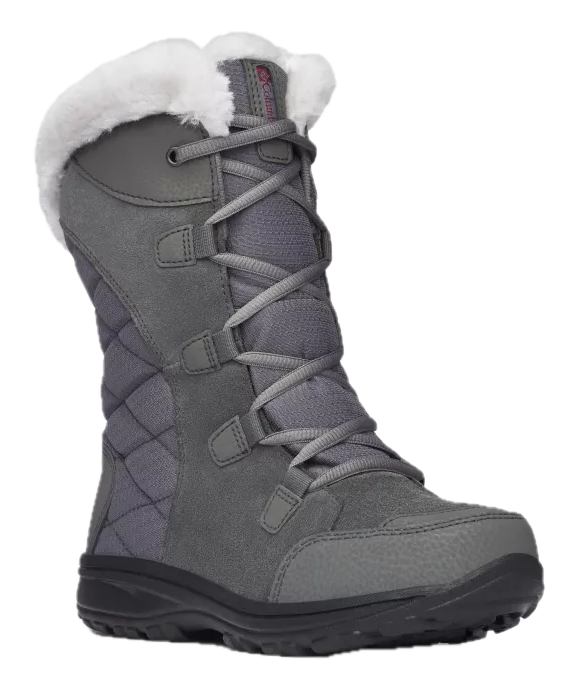 Category: Casual
Category: Casual
Insulation: 200g synthetic
Shaft height: 8.5 in.
What we like: Low-profile design is comfortable and lightweight.
What we don’t: Not built for serious conditions or terrain.
Columbia’s Ice Maiden has been a staple in their collection for years and remains one of the most popular casual women’s winter boots on the market. The light insulation and soft materials give it excellent comfort for mild winter conditions, and the woven upper has a nice feel that’s noticeably less bulky than options like the Kamik Momentum 3 above and Sorel’s Joan of Arctic below (although it’s not as dependable in deep snow). Similar to many designs here, the Columbia utilizes 200-gram synthetic insulation, although the light and streamlined build does translate to a slight step down in warmth. But there’s a reason we see the Ice Maiden so frequently around town: It's comfortable, affordable, and looks good to boot.
The Columbia Ice Maiden’s flexible build makes it enjoyable to wear all day, and it can be a fine partner on long winter walks provided you aren’t venturing too far from the trailhead. However, in addition to the compromises in wet-weather protection and warmth, the Columbia lacks the stability of dedicated winter hiking models, and we caution against taking a boot with a faux-fur collar into the backcountry—the additional material could grow heavy with snow and ice. But value-wise, you’d be hard-pressed to find a better daily driver for less. And given the widespread popularity of the collection, the Ice Maiden is also offered in a wide version, shorty boot, and slip-on design.
See the Columbia Ice Maiden II
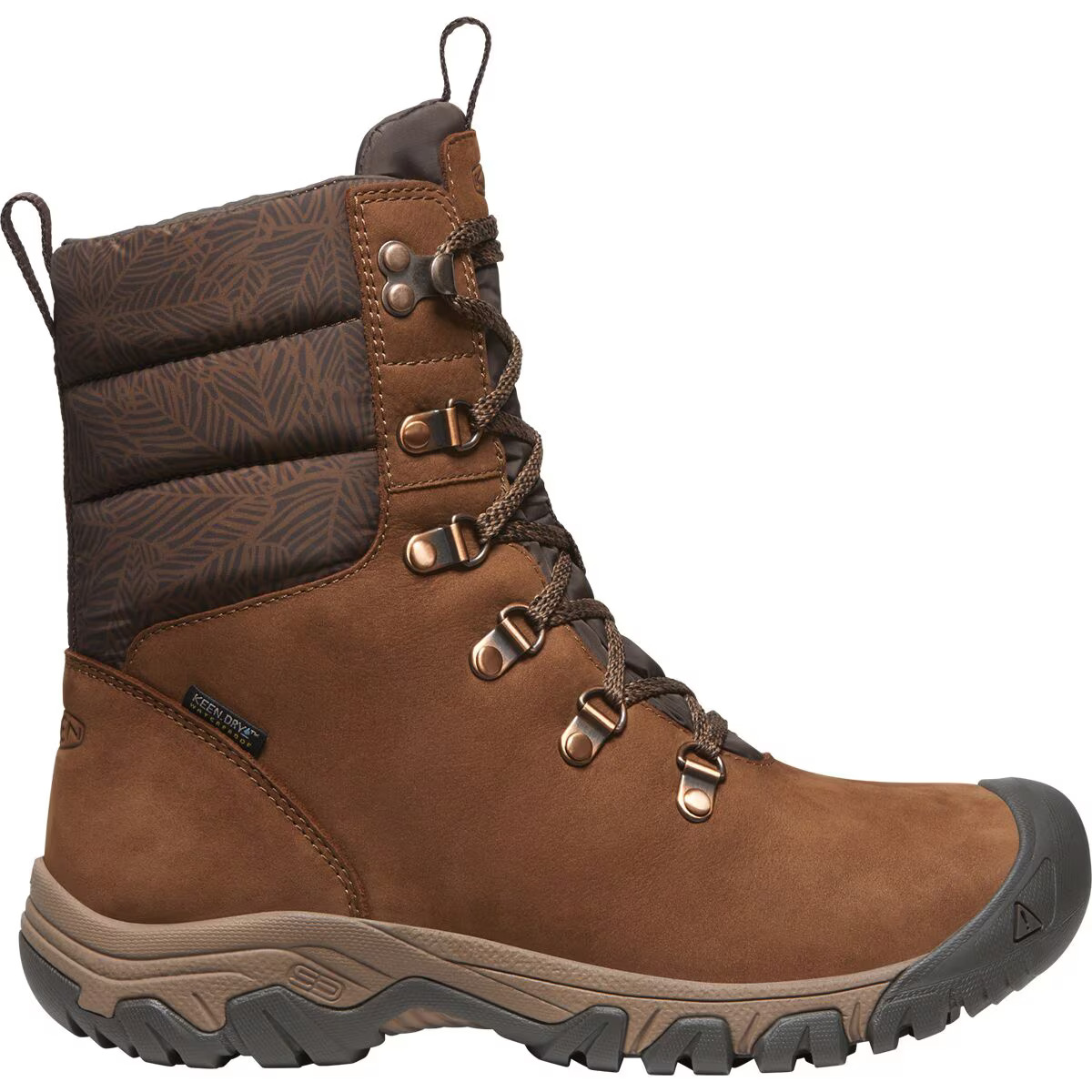 Category: Winter hiking
Category: Winter hiking
Insulation: 200g Keen.Warm
Shaft height: 7.75 in.
What we like: A capable winter hiker with premium materials and city-friendly styling.
What we don’t: Runs narrow and will take some time to break in.
No one does traditional leather boots quite like Keen, and their Greta merges that classic styling with down-like quilting at the collar that’s reminiscent of a puffy jacket. Put simply, this boot is a real treat both in terms of looks and all-around comfort and performance with competitive specs to back it up. Like many of Keen's designs, the Greta boasts premium leather (certified to the Leather Working Group’s strict environmental standards) lined with an in-house waterproof membrane and 200-gram recycled synthetic insulation, and the Freeze outsole is highly capable on slick and tricky terrain. The fit is also highly customizable for logging trail mileage, while the padded collar and tongue look the part for casual wear. Keen makes some of our favorite hiking boots on the market, and the Greta follows suit in a very functional winter-ready build.
How does the Greta compare to the popular Oboz Bridger above? The two stack up similarly in terms of warmth and waterproofing and utilize rubber tread that’s purpose-built for navigating slippery and icy conditions. The Greta runs on the narrow side and is a little stiffer and therefore will take longer to break in, but it should conform nicely to your foot over time (you can always use a leather conditioner to help). The Greta also wins out as a crossover option for both trail and around-town use, while the Oboz leans more toward the performance end of the spectrum. Other options in the Greta collection are equally well built, including the more protective Greta Tall (9 in.) that subs in felt patches at the collar and Greta Chelsea that combines chic city styling with the same capable outsole (it’s a nice performance upgrade from the Blundstone above). And for a dedicated winter hiking boot, check out Keen’s Revel IV Polar ($190) and Revel IV High Polar ($210).
See the Keen Greta Waterproof
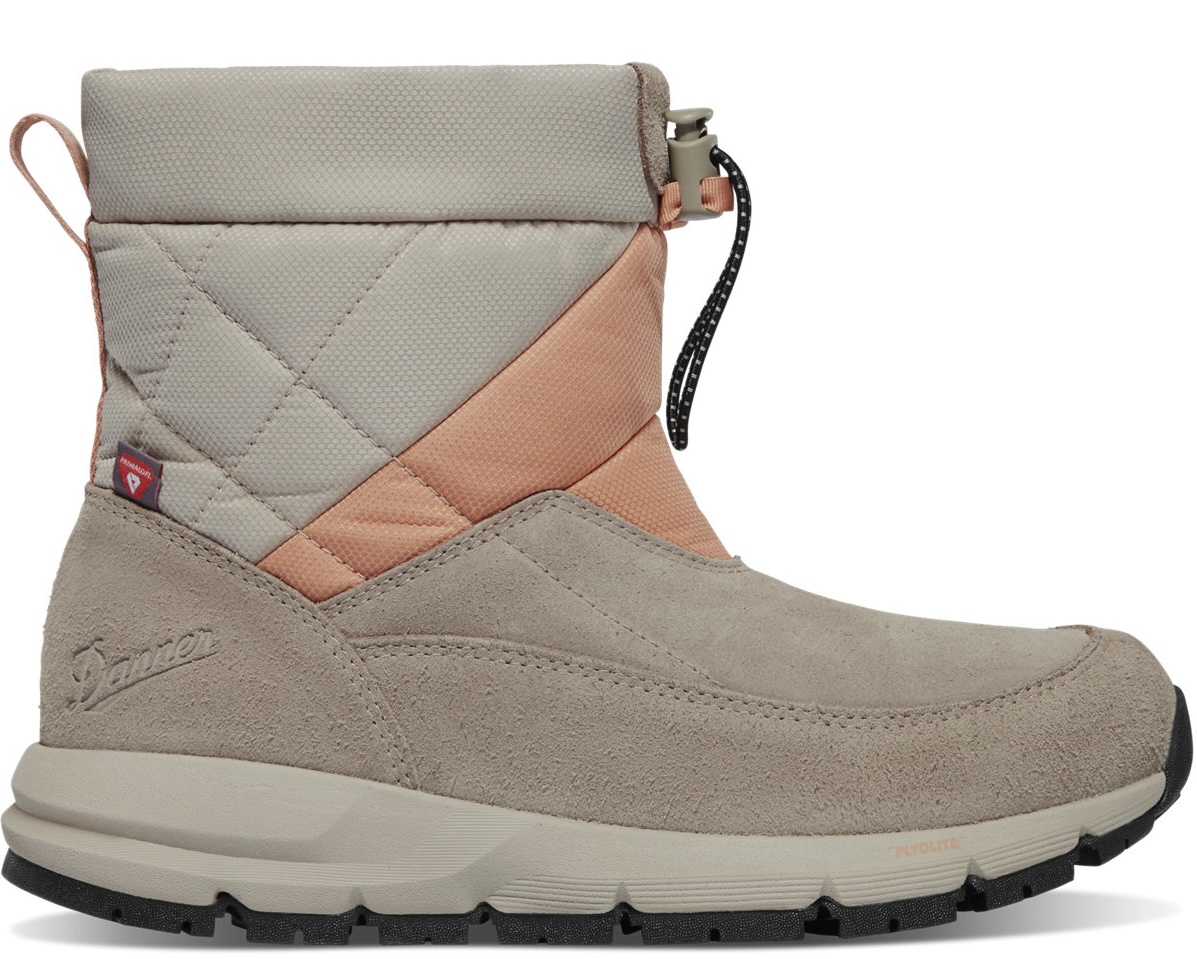 Category: Casual
Category: Casual
Insulation: 400g PrimaLoft
Shaft height: 7 in.
What we like: A playful and warm design that’s surprisingly capable on slick terrain.
What we don’t: No laces and pricey for what you get.
Down booties have their place for performing camp chores and brief outings from the tent but lack versatility for wearing around town or walking longer distances. Danner has come up with an intriguing solution in their Cloud Cap Boots, which combine a down bootie-like upper with durable and hardwearing suede around the forefoot and heel. Despite its casual intentions, the Cloud Cap’s Vibram outsole is surprisingly grippy on packed snow and ice, so much so that we’ve worn this boot on a few short winter hikes and been pleased with the performance. Combined with a 2-layer waterproof membrane and generous 400-gram PrimaLoft insulation, the Cloud Cap stands out as a warm and well-built option with a playful look and feel.
The Cloud Cap has become one of our tester's go-to boots. The simple drawstring closure makes it incredibly easy to take on and off (great for quick trips to the garage or mailbox), but the trade-off is less customization and a sloppier feel. And while we’re big fans of the 400-gram warmth in most cases, we’ve found the design overheats quite easily in temperatures above freezing. Price-wise, $190 is a lot to spend given the fairly limited utility, although the cost did come down recently from a whopping $210, and we appreciate the excellent build quality and classy appearance. For a cheaper pull-on option with similar styling, check out Keen’s Howser Fold Down ($115) or The North Face's ThermoBall Lace Up Boots ($135).
See the Danner Cloud Cap
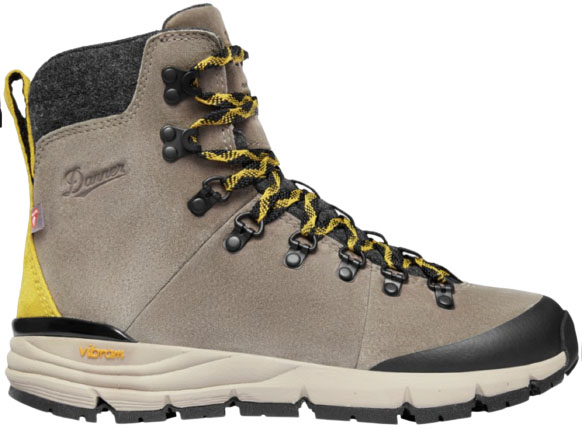 Category: Winter hiking
Category: Winter hiking
Insulation: 200g PrimaLoft
Shaft height: 7 in.
What we like: Great mix of performance features and casual styling.
What we don’t: Expensive considering its warmth and protection.
Our list wouldn't be complete without one more winterized hiking boot from the veritable Danner. Here, the Mountain 600 boot gets an arctic upgrade, with 200-gram PrimaLoft insulation, a Vibram Arctic Grip sole, and a side zipper along the instep for easier on and off (though if laced up tight, opening the zipper often isn't enough to get the boot off without some untying). The suede exterior and contrasting laces look great, and the boots have a very light and nimble feel underfoot. Our testers have also been impressed with the Danner Dry waterproofing and the fact that the zippers have thus far sealed out all moisture.
Why doesn't the Arctic 600 rank higher on our list? As nice as this boot is, $240 is a hefty price tag for a shorter insulated boot. That said, it all depends on what winters are like where you live and what your outdoor plans entail. But for less than half the price, the Kamik Momentum 3 or Columbia Ice Maiden II above are similarly warm and lighter with higher shafts. What's more, for $10 less, you can get an insanely warm boot like the Baffin Impact. Still, if you love to get out on snowy trails and value a warm yet nimble winter option, the quality and performance of the Danner can't be denied. Versatile and comfortable out of the box, if you can stomach the price, this is a boot that should serve you well over the long term.
See the Danner Arctic 600 Side-Zip
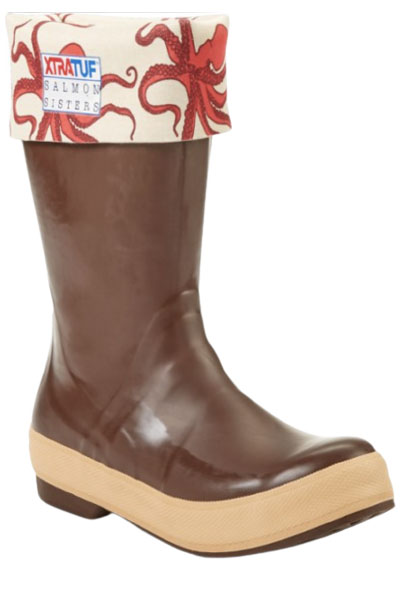 Category: Work
Category: Work
Insulation: None
Shaft height: 15 in.
What we like: 100% waterproof and 100% fashionable.
What we don’t: Not insulated for true winter use.
Xtratufs are practically a requirement for any Alaskan, but it’s only recently that they’ve come into vogue in the Lower 48. These 100%-waterproof boots merge function and fashion for women, with printed art on the liners—including everything from octopi to sand dollars and fish—that can be folded down as cuffs for daily wear. And staying true to their legacy, many of Xtratuf’s liner designs come from Salmon Sisters, a company founded and operated by two female Alaskan fishermen.
We hesitated to include Xtratufs on our list of winter boots for years, given that the tall Legacy doesn't come in an insulated variety for women. But the thin neoprene liner provides a decent amount of isolation from the cold, and we’ve come to think of the boots as a highly versatile option for all seasons. Fold down the cuffs in mild weather or pair the boots with heavy socks in the winter—regardless of how you wear the Xtratufs, they’re impressively waterproof, provide great traction on wet ground, and will hold up to season after season of use (that said, for consistently cold climates, we still recommend an insulated boot). Like the Bogs and Muck Boot above, we don’t recommend the Legacy for hiking due to its heavy build and lack of breathability, but for outdoor chores or work, this is an excellent non-insulated choice.
See the Xtratuf 15 Inch Legacy Boot
| Winter Boot | Price | Category | Height | Insulation | Weight |
|---|---|---|---|---|---|
| Ugg Adirondack III | $250 | Casual | 8/9.5 in. | 200g wool | 2 lb. 6.0 oz. |
| Kamik Momentum 3 | $110 | Casual | 11.8 in. | Heat-MX synthetic | 2 lb. 4.0 oz. |
| Oboz Bridger 7” Insulated | $210 | Winter hiking | 7 in. | 200g 3M Thinsulate | 2 lb. 9.0 oz. |
| Blundstone All-Terrain Thermal | $265 | Casual | 6 in. | 200g Thinsulate | 1 lb. 15.0 oz. |
| Baffin Impact | $230 | Work | 12 in. | 8-layer lining | 5 lb. 11.2 oz. |
| Muck Boot Arctic Sport II Tall | $150 | Work | 16.9 in. | 5mm neoprene & fleece | 4 lb. 0 oz. |
| Sorel Caribou | $200 | Casual | 9 in. | 9mm ThermoPlus | 3 lb. 6.0 oz. |
| The North Face Shellista V Mid | $165 | Casual | 10 in. | 200g Heatseeker Eco | 2 lb. 6.4 oz. |
| Merrell Moab Speed 2 Thermo Mid | $190 | Winter hiking | 6 in. | 200g PrimaLoft Gold Eco | 1 lb. 15.0 oz. |
| Baffin Chloe | $195 | Casual | 11 in. | B-Tek foam & Polywool | 4 lb. 9.6 oz. |
| Bogs Neo-Classic Tall | $140 | Work | 14 in. | 5mm Neo-Tech | 3 lb. 6.7 oz. |
| Sorel Joan of Arctic | $240 | Casual | 8.75 in. | 6mm felt | 3 lb. 8.4 oz. |
| Columbia Ice Maiden II | $100 | Casual | 8.5 in. | 200g synthetic | 2 lb. 1.7 oz. |
| Keen Greta | $190 | Winter hiking | 7.75 in. | 200g Keen.Warm | 2 lb. 3.6 oz. |
| Danner Cloud Cap | $190 | Casual | 7 in. | 400g PrimaLoft | 1 lb. 15.0 oz. |
| Danner Arctic 600 Side-Zip | $240 | Winter hiking | 7 in. | 200g PrimaLoft | 2 lb. 5.0 oz. |
| Xtratuf 15 Inch Legacy Boot | $160 | Work | 15 in. | None | 4 lb. 9.6 oz. |
Oh, winter. Whether you love it or hate it, everything is made easier by having the right gear. No one likes cold or wet feet (nor is it safe), so choosing your winter footwear strategically is a necessity. The women of the Switchback Travel team get excited when the mercury starts to drop because we love to ski and snowboard, but even if you just need to commute to the store or walk the dog, a trusty pair of boots should always be close at hand. This guide was initially put together in late 2021 by former senior editor Jenny Abegg, who lives in northern Washington and gets after it in the mountains no matter what the weather is doing. Editor-in-chief Penney Garrett lives in Lake Tahoe and took over the guide in 2024. Tahoe is known for its often-impressive winters, so the testing grounds for our lineup of winter-worthy boots is impressive to say the least. From icy walkways to buried driveways to spring slush-fests, we have the collective experience to help you make a great purchase.
Our current lineup of 17 solid options showcases our ongoing testing and a deep understanding of the market. We make sure to take firsthand experience from our testers and friends as well as feedback from the wider online community. As we test each pair of boots, we pay special attention to their comfort and fit, warmth, waterproofing, weight, height, and overall construction. Some of the options listed above have been tested over many years, and as we discover new aspects or weaknesses, we update this guide accordingly. We are also always on the hunt for new and noteworthy designs, so be sure to check back often.
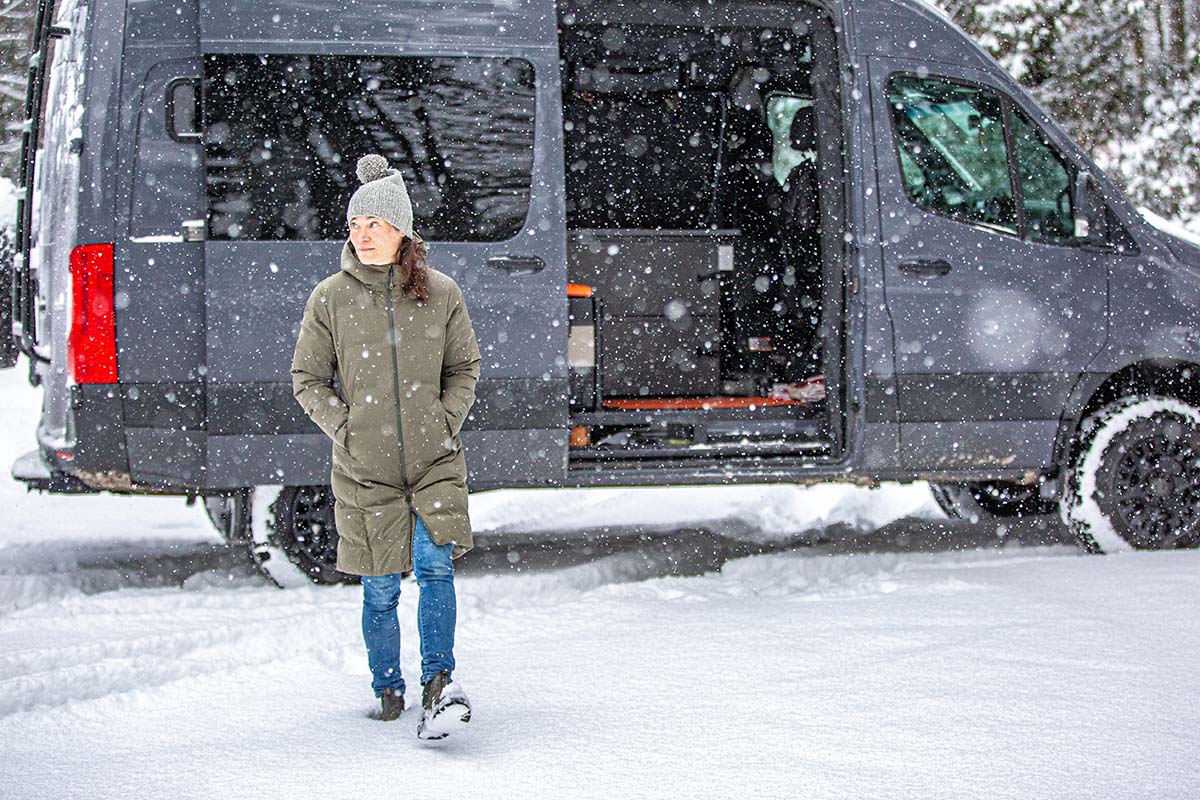
Casual
Casual or everyday winter boots are not the absolute warmest or best at resisting the elements, but they certainly get the job done for most winter walking and après-ski activities. The construction of casual boots tends to have less rubber and more leather and exposed insulation, including synthetic baffles, fur, or wool. Other commonalities include a waterproof membrane, moderate level of insulation, and well-cushioned interiors that will keep most people warm and comfortable while shoveling or on short jaunts out of the house. Some casual boots are fairly streamlined and could be worn inside at work or while running errands (like the Blundstone All-Terrain Thermal), while others, like the Sorel Joan of Arctic, are bulkier and built for outdoor-only environments.
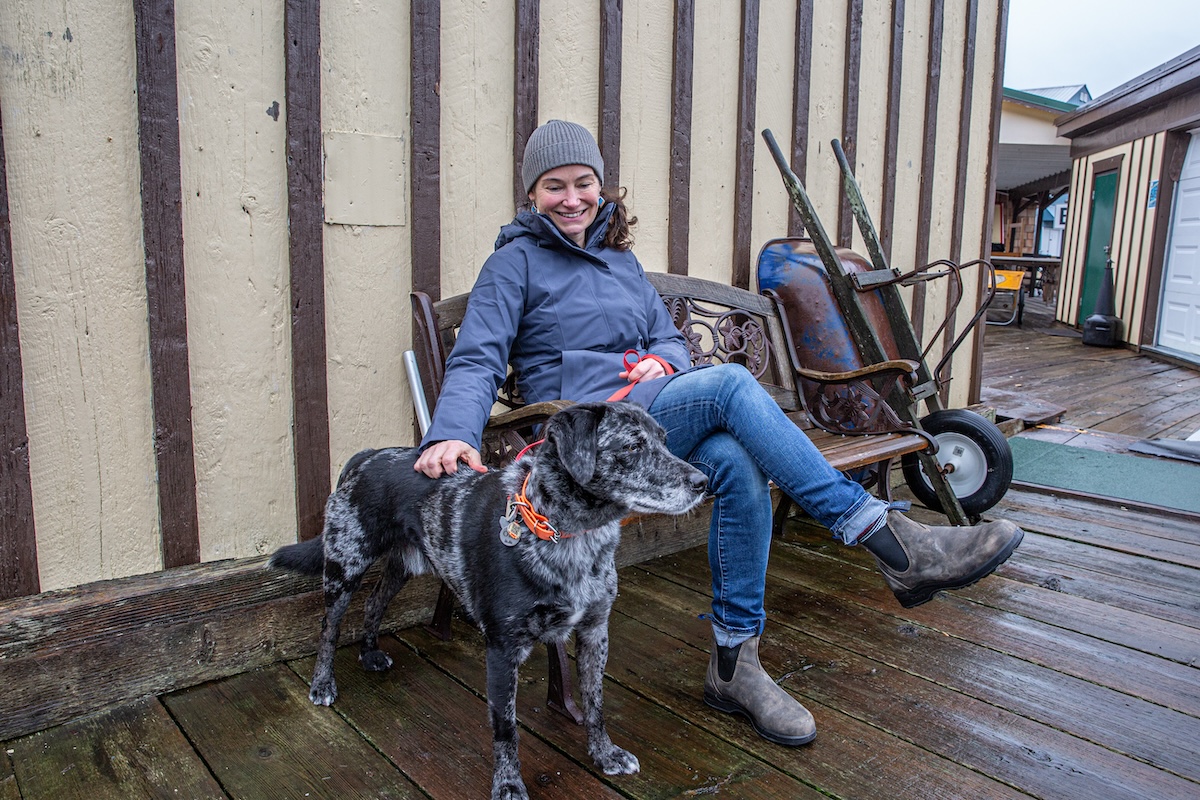
Winter Hiking Boots
Looking a lot like beefed-up hiking boots—because they are—winter hikers are a great choice for snowshoeing and other hiking adventures in the cold. These waterproof designs typically have a lower ankle height and less insulation than the other boot types, which allow them to breathe reasonably well when you’re working up a sweat. And their more flexible and nimbler designs make it easier to cover serious ground. Traction is another important feature, and you’ll see some of the more advanced tread layouts with rubber that grips well even on frigid and icy ground. Leading models in this category include the Oboz Bridger 7” Insulated and Merrell Moab Speed 2 Thermo Mid Waterproof.
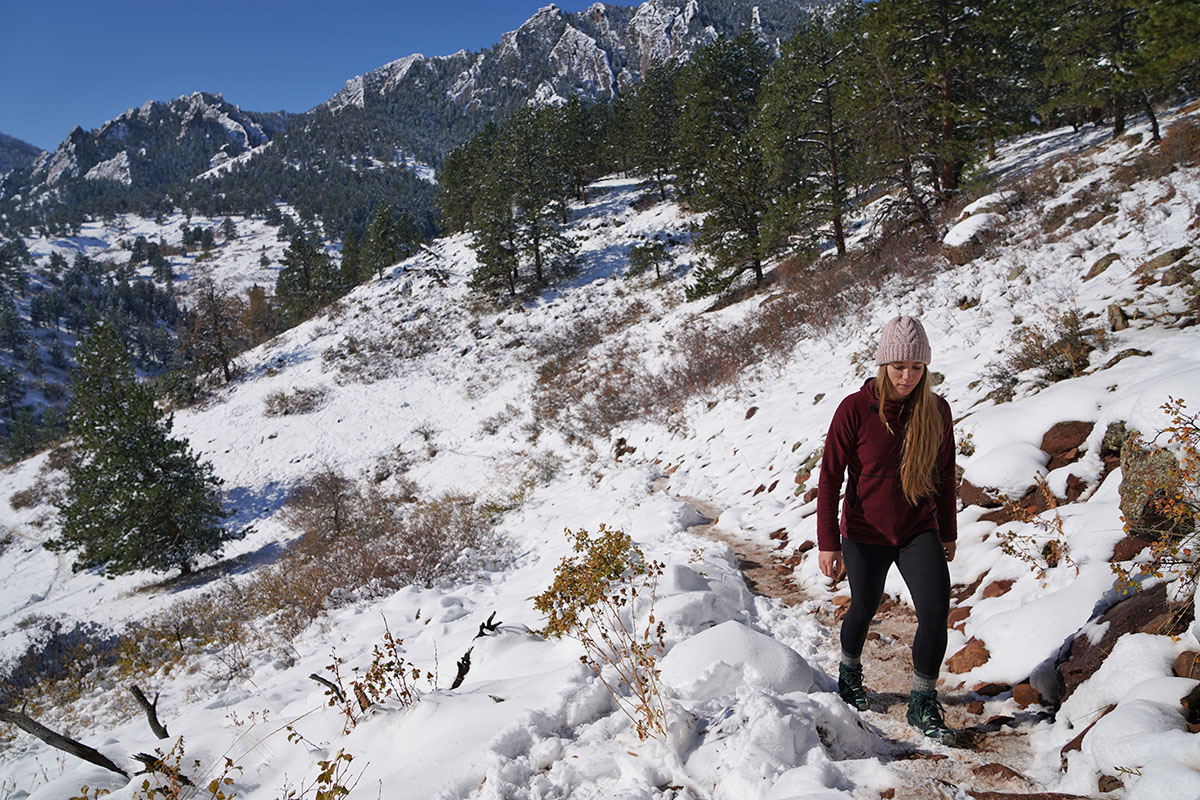
Work/Extreme Cold Winter Boots
Made for the depths of winter and the coldest parts of the world, boots in our work/extreme cold category are big, bulky, warm, and tough. They also take the function-over-fashion approach with heavy applications of rubber, nylon, and/or thick leather that perform best in frigid temperatures and in deep snow. Keep in mind the heavy construction does add weight and bulk and you won’t want to cover major distances with 5+ pound boots like the Baffin Impact. This boot type is also often too stiff to safely use while driving. Instead, what you get is a super high level of warmth that is great for low-output activities in subzero temperatures.
Some (but not all) brands include a comfort or temperature rating for their winter boots and they’re often very impressive numbers, claiming a rating of -25 degrees Fahrenheit or lower. But right off the bat, let’s be clear: There is no standardized test to rely on for measuring a temperature rating. As such, comfort ranges are not a guarantee that you’ll be warm at the listed temperatures. In fact, we can almost guarantee you won't be—particularly if you’re standing still. As we all know, how well a boot keeps you warm is dependent on a number of individual factors, including age, level of activity, the thickness of your socks, the tightness of the boot, and whether or not you run hot or cold. We recommend using the comfort ranges as basic guidance, but stay very conservative by adding a sizable buffer with your real-world use.
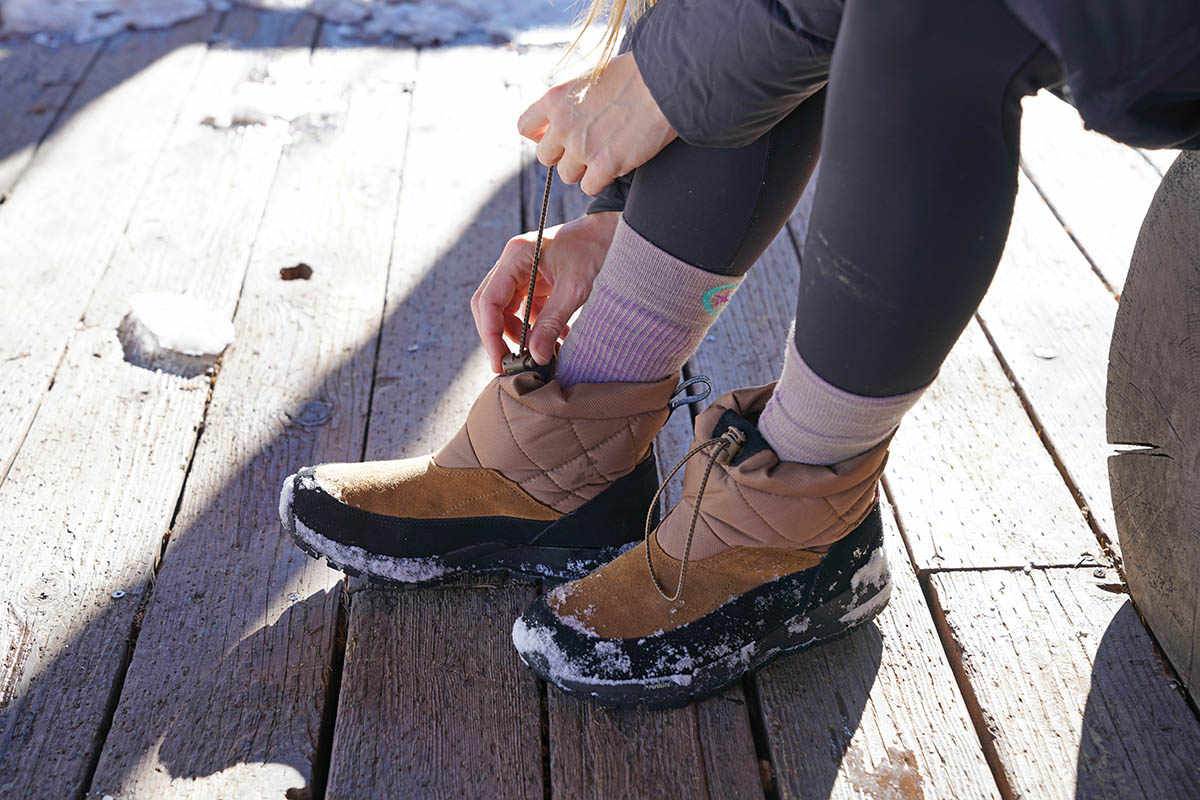
Synthetic
The most common insulators nowadays are synthetics stuffed between the inner lining and outer shell of the boot (including under the foot). PrimaLoft and Thinsulate by 3M are popular synthetic insulations that have a strong presence in the jacket, glove, and ski boot worlds and have an equal standing with winter boots. They’re non-bulky and lightweight and continue to insulate even when wet. Proprietary synthetic insulations for Merrell (M Select) and Columbia (Omni-Heat), among others, offer comparable performance to the name brands. For an indicator of warmth, check for the weight of the insulation, which indicates the heft of a 1 meter x 1 meter section (not how much insulation is actually in the boot). Light to midweight boots will have 200- to 400-gram fill, while heavy-duty cold-weather boots will have significantly more.
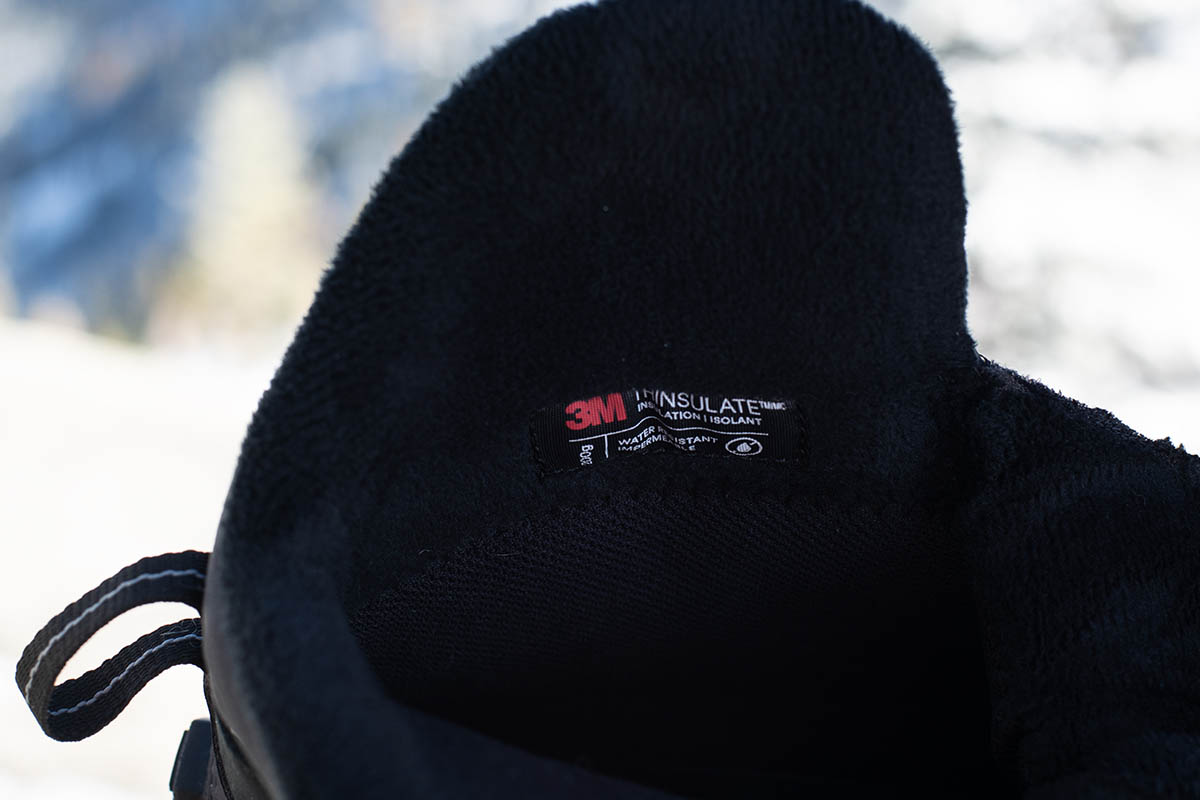
Felt, Sheepskin, and Wool Linings
Some boots eschew modern technology and opt for warmth through a thick lining of felt or wool, including the classic Ugg Adirondack III with 17-millimeter UggPure wool in the lining and insole. While bulky, these insulation types can be very effective. Unlike synthetic insulation that is encased by the boot, felt, sheepskin, and wool linings can get wet if exposed to the elements, but they will continue to insulate. And the nice part is that many of these linings are removable (as we see in the Sorel Joan of Arctic), so you can set them by the fire to dry in between runs on the sled hill.
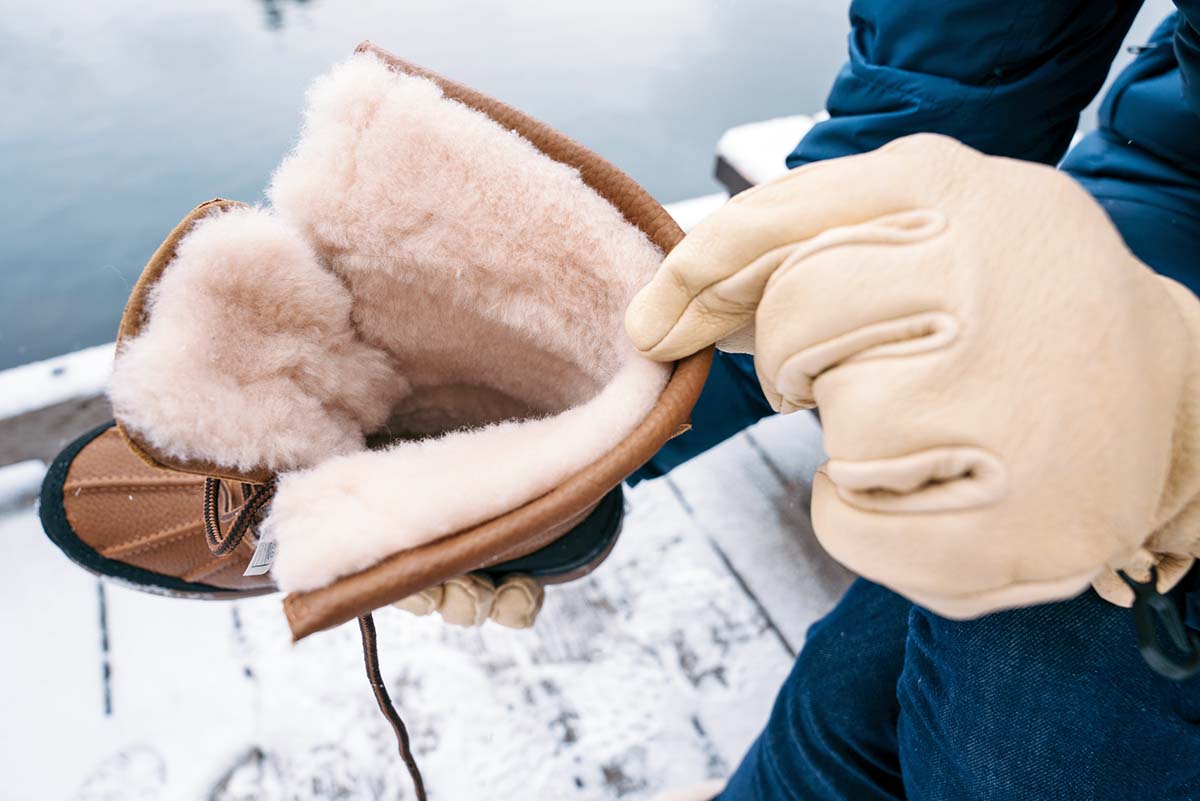
Down Fill
Down-insulated boots are not commonplace, and for times when you will be in direct contact with the snow (which can be often in winter), they are not the most secure option. This is because, unlike synthetic fills and natural materials like felt, sheepskin, and wool, down loses its ability to insulate when wet. As such, we recommend steering clear unless you’re in the market for a very casual around-town boot or basecamp shoe that is for use exclusively inside your tent. It’s hard to knock the utility of a good down bootie for indoor use, but in most cases, these are not meant to be taken outdoors.
Winter boots come in a fairly wide range of heights, from just over the ankle to just below the knee. In general, their various heights fall in line with our categories above (to see the specific heights for each model, which is measured from the footbed to the top of the boot, see our comparison table above). At the low end of the spectrum are hiking models, which measure roughly 6 to 7 inches in height. This makes them lighter and more flexible, but they are more prone to having snow come in over the top of the boot if you’re post-holing in the deep stuff. The good news is that a pair of waterproof gaiters can help resolve this issue (more on gaiters below).
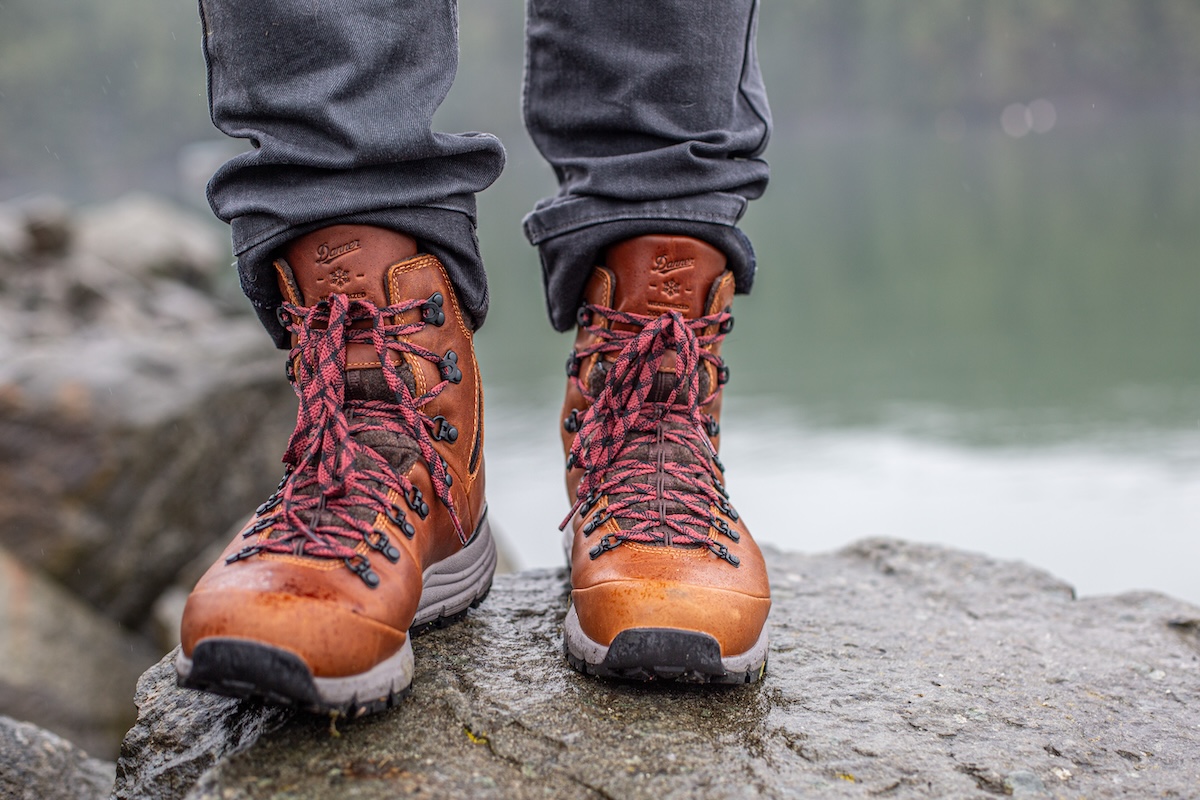
Work boots and full-on extreme-weather models sit higher on the leg, including the 15-inch Xtratuf Legacy and almost 17-inch Muck Boot Arctic Sport II Tall. It’s worth noting that the extra height does inhibit range of motion, and muck-style boots can be a real struggle to remove at the end of the day. Finally, boots in the casual category fall somewhere in the middle, with a number of options in the 6- to 10-inch range. There are some outliers, however, including the tall, 11-inch Baffin Chloe. And it’s important to remember that many boots are offered in a few different heights (such as the 7.75-in. Keen Greta and 9-in. Greta Tall), which we call out in many of the write-ups above.
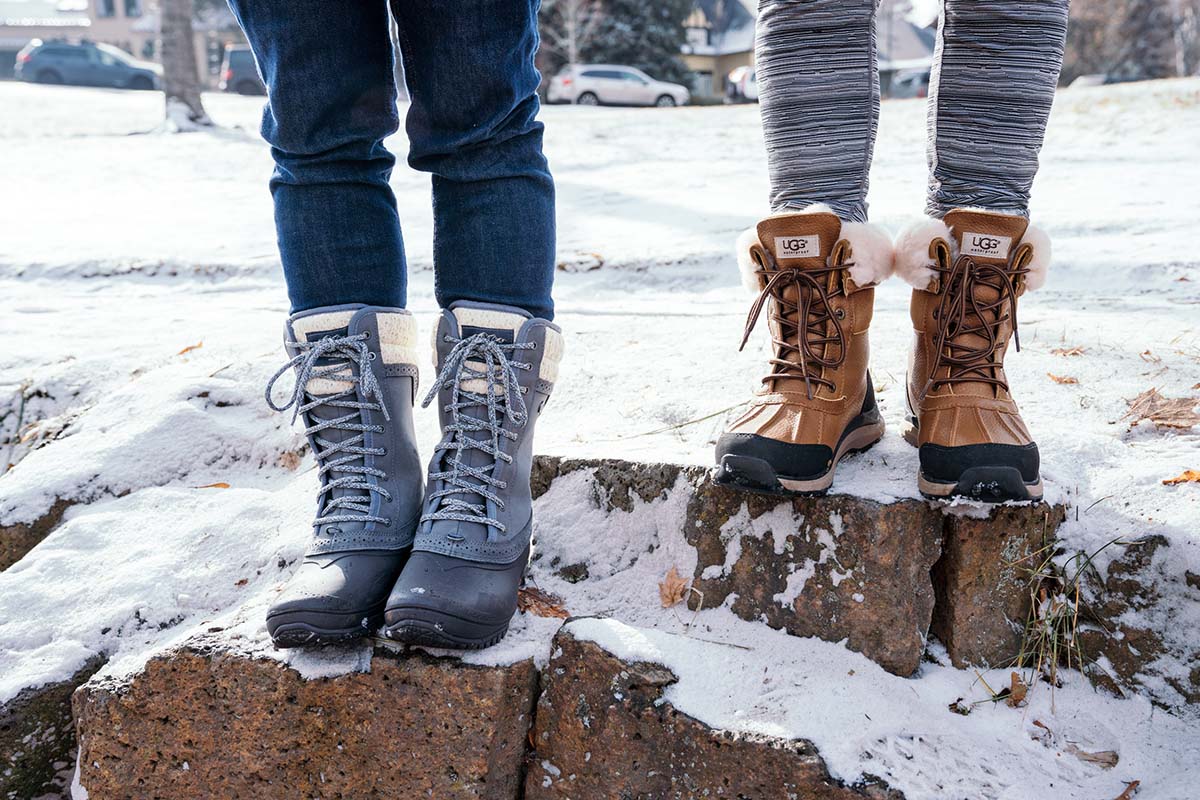
As with height, winter boot weight can vary significantly. Unsurprisingly, the heaviest designs are meant for the worst conditions, as weight often goes up as the level of insulation increases. Work-ready builds from Muck Boot or Bogs can reach close to or over 4 pounds per pair, and the same is true for a burly boot meant for extreme conditions like the Baffin Impact (5 lb. 11.2 oz.). On the other end of the spectrum is the Merrell Moab Speed 2 Thermo Mid WP, which weighs about the same as a standard hiking model at just 1 pound 15 ounces. You'll certainly want to consider a boot's heft if you're planning to take it on long jaunts in the backcountry, but weight matters a lot less for casual use or short walks around town.
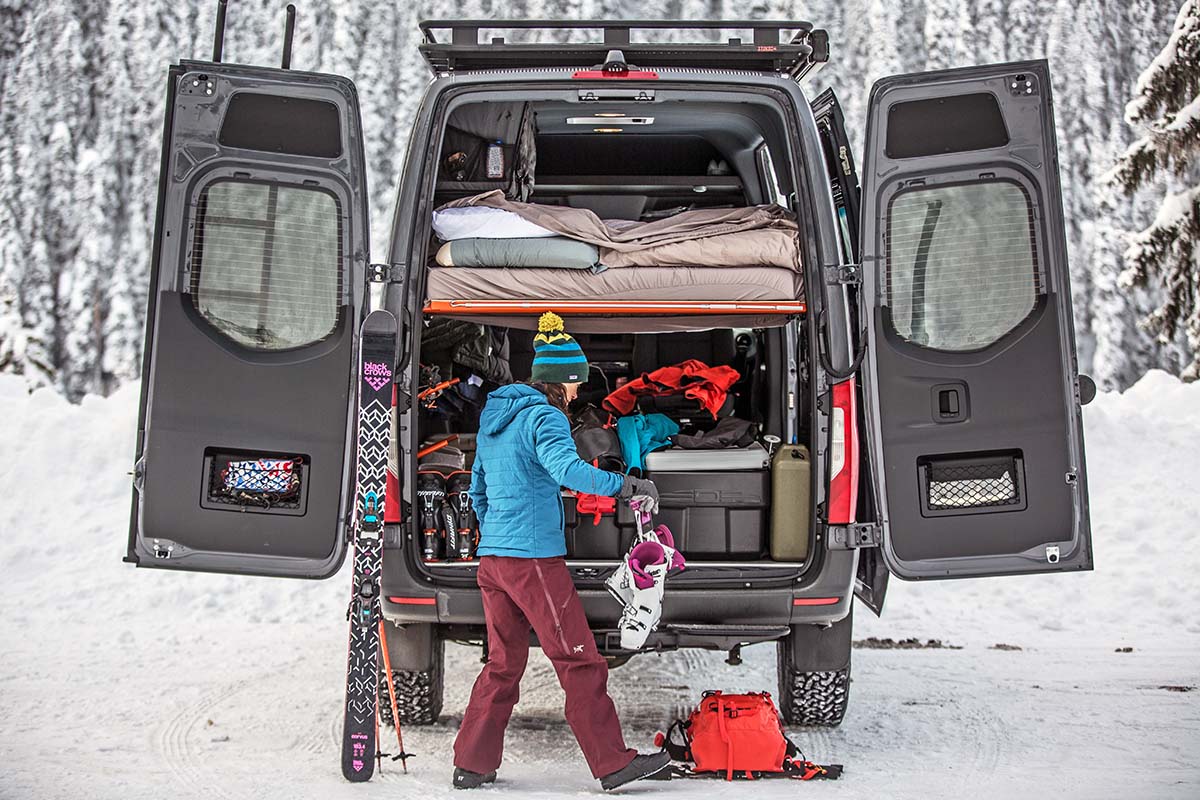
Traditional winter boots like the Sorel Joan of Arctic and Baffin Impact are two-piece designs with outer shells protecting insulated, removable liners. The advantage of this construction is that the boots are extremely tough: The rubber and leather exterior materials are very durable and waterproof and they do a great job isolating you from the cold. The removable insulated liners are cushioned and soft, providing more comfort than a typical one-piece design. And perhaps the most functional element of the two-piece system is that you have the option to remove the liners to dry them more quickly should the boots get wet. These types of boots can feel a bit sloppy and ungainly when you’re covering long distances, but for short walks, outdoor work, and harsh conditions, a boot with a removable liner is a nice choice.
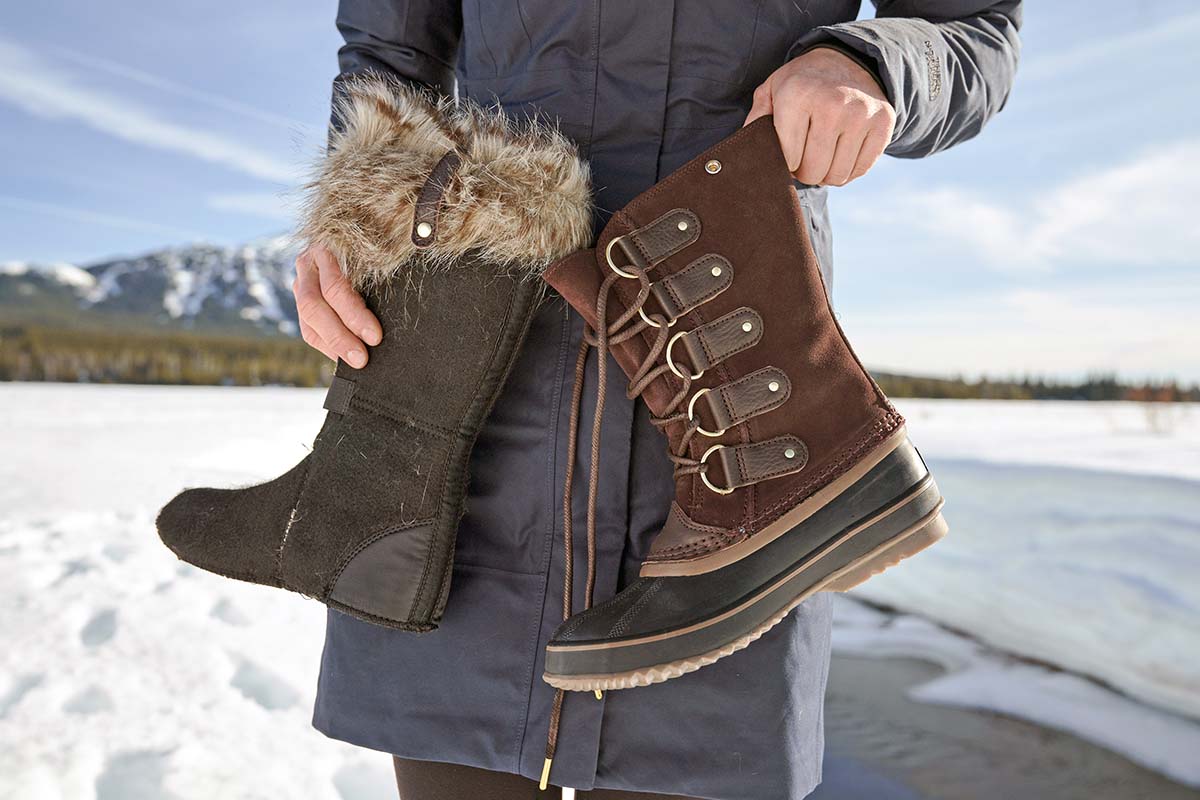
For active uses like hiking or snowshoeing, or if you want to keep weight and bulk to a minimum, it’s better to go with a one-piece boot. These models often resemble a hiking design and offer a more precise fit and nimbler feel for greater control and stability in difficult terrain. They’re also lighter on average, which is a positive for longer walks and snowshoe trips. You do compromise a little protection, but quality one-piece designs like the Oboz Bridger 7" Insulated and Ugg Adirondack III are still formidable options in harsh conditions.
Considering that you’ll be spending a good amount of time walking in varying depths of snow, waterproofing matters. The good news is that most designs excel in this respect. Traditional two-piece boots that have a separate shell and liner rely on a burly exterior to keep moisture out. The rubber lowers are fantastic barriers from the wet, shedding anything from falling snow to slushy puddles. Further, treated leather uppers and seam sealing keep you protected when walking through deep snow. On the other hand, one-piece boots have a thin, waterproof, and breathable membrane sandwiched in between the outer material and lining. In general, this style is a little less waterproof overall, and you’ll want to be sure the exterior fabric has a water-resistant treatment to keep it from soaking up moisture (more on this in the "Boot Care" section below).
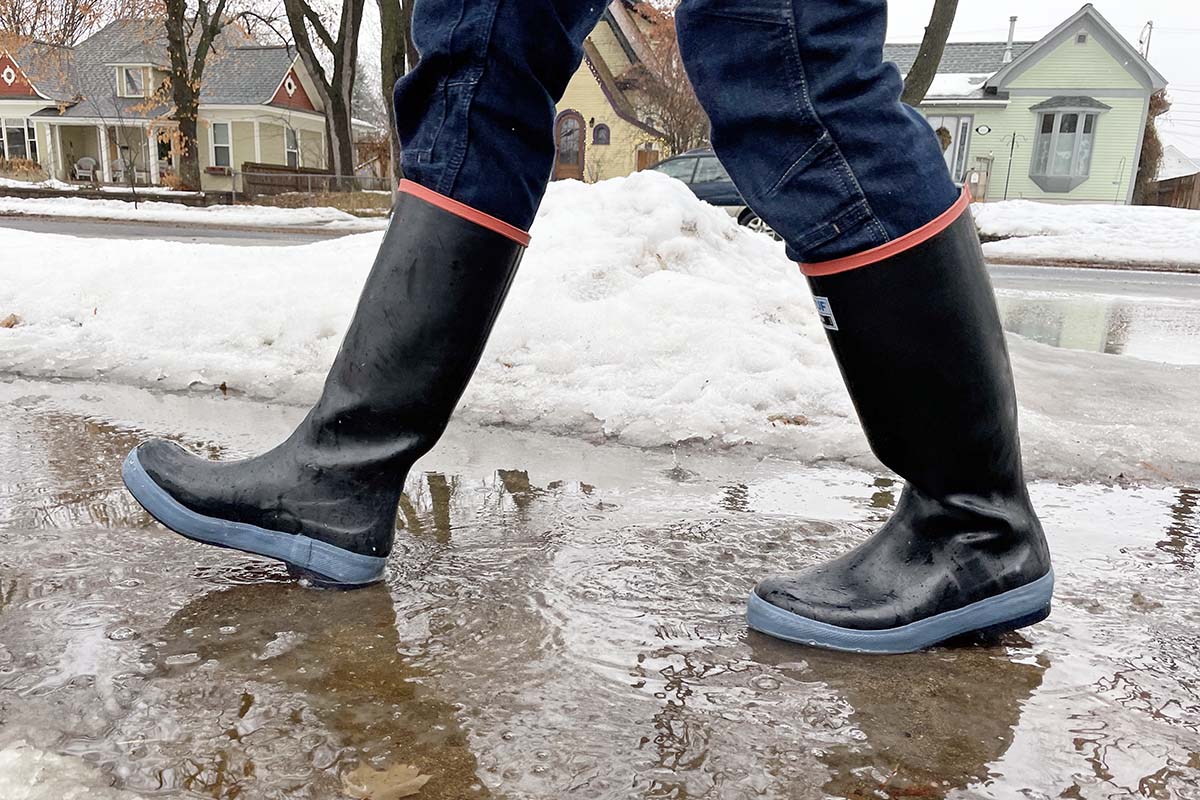
It’s worth noting that a waterproof design doesn’t do much good if snow and moisture come in from around the tongue or top of the boot. If deep puddles are a concern, you’ll want a gusseted tongue that connects to the upper high up on the boot. And as we touched on in the boot height section above, a tall design like the Muck Boot Arctic Sport II Tall or Bogs Neo-Classic Tall can be useful in keeping your legs dry, but it’s often worth adding a pair of waterproof gaiters to truly stay protected in deep snow. Typically made out of durable nylon, gaiters are tough and provide an additional barrier around the top of your boots and lower leg (they’re popular for uses like hiking, snowshoeing, and mountaineering). Models vary significantly by activity and how much protection you need, but for serious winter use, the Outdoor Research Expedition Crocodile Gaiters are the real deal.
In general, winter boots put a premium on warmth and protection, which has a negative impact on breathability. Their substantial, waterproof constructions that do so well at trapping heat inside are equally prone to running hot in mild temperatures and during active use. For many folks, this is a fair trade-off, and breathability shouldn’t be a top consideration for those planning only quick trips outside or if conditions in your region are truly frigid. But if you live in an area with mild winters or plan to be hiking or snowshoeing for extended stretches, you’ll want a balanced design that has a lighter-weight upper and less insulation (around 200g). Hiking-ready models like the Oboz Bridger Insulated and Merrell Moab Speed 2 Thermo Mid both perform well in this regard. And if breathability is a top priority and temperatures will be warm (around freezing or above), it may be worth opting for a pair of uninsulated hiking boots instead.
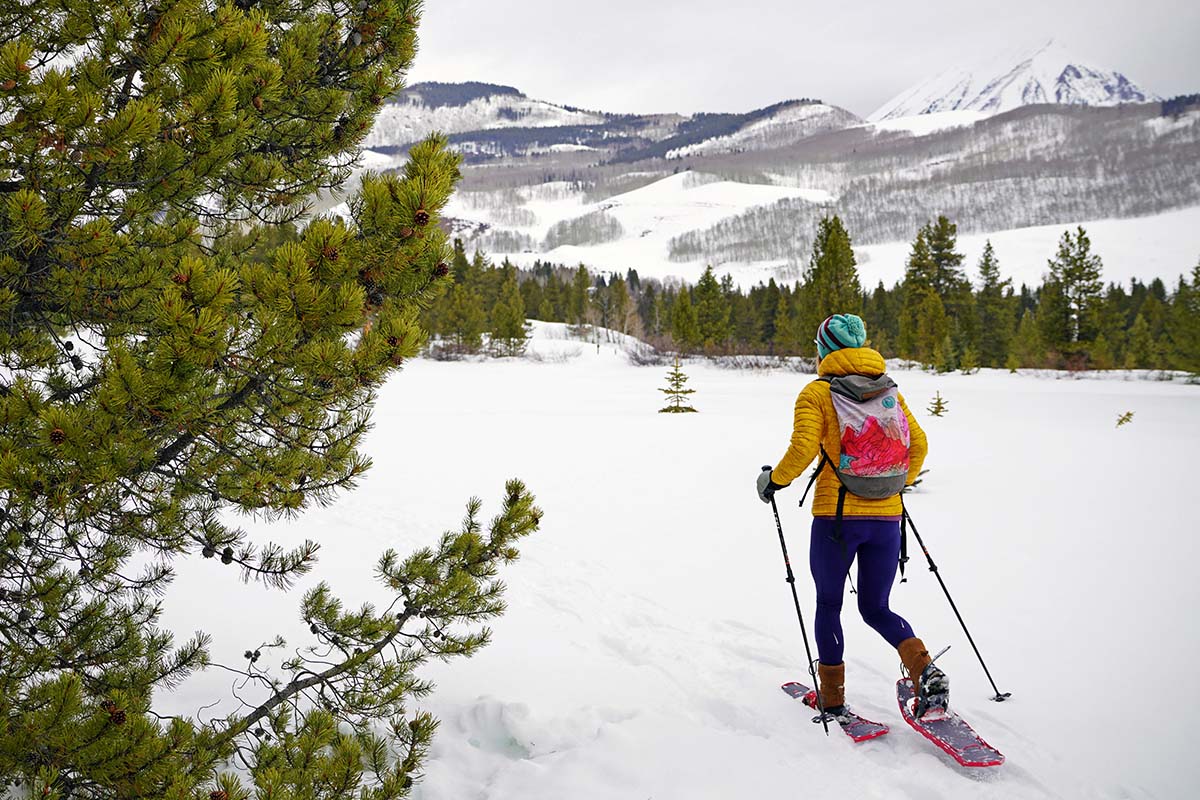
Snow boots have a different lug pattern and rubber compound than their on-dirt hiking boot cousins. The compounds are softer and don’t harden even when temperatures drop, which helps them continue to grip on snow and ice. In addition, the lug patterns are designed to prevent snow buildup. The outer soles themselves are very thick, which isolates your feet from the cold and rough ground underfoot. In general, hiking-ready models have the best traction, while casual and work boots can be a little cumbersome and prone to slippage. Vibram made some headlines with their Arctic Grip compound that's specifically designed to stick to slippery and icy surfaces, which we see in designs like the Danner Arctic 600 Side-Zip. But from our experience, we still turn to a winter traction system (covered below) in very icy conditions.
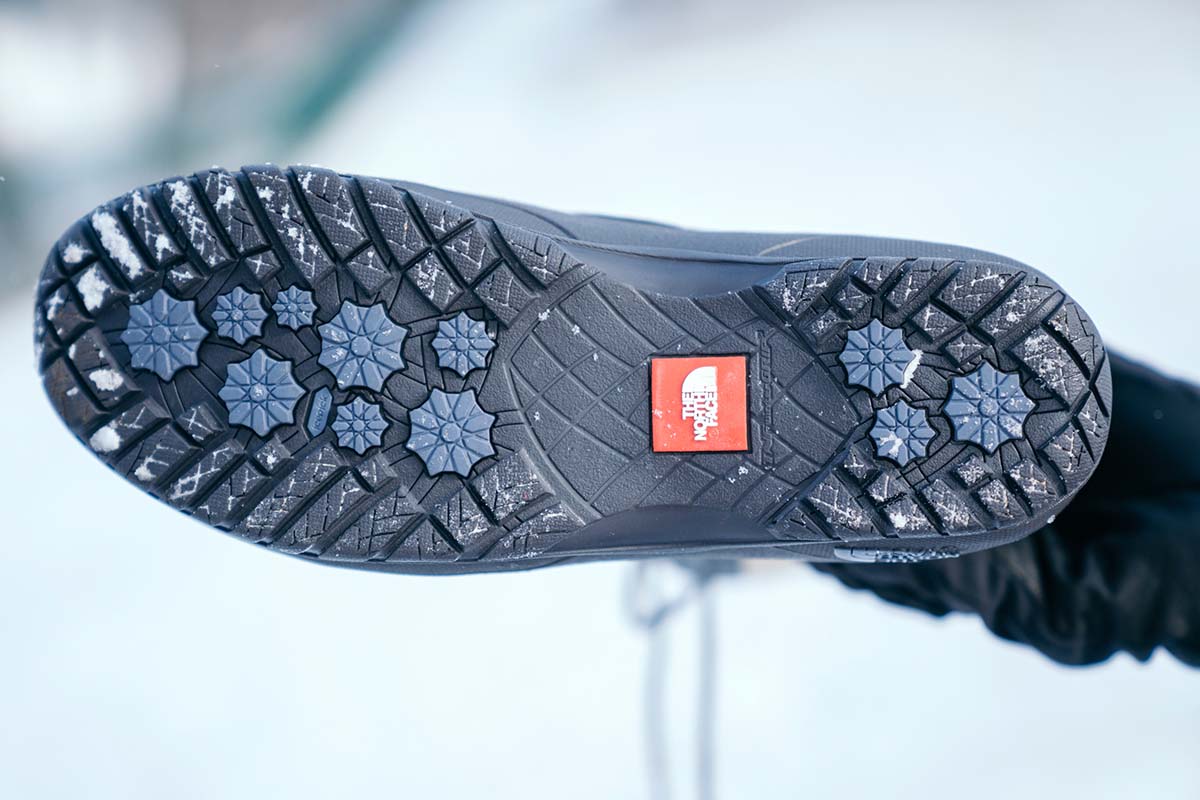
Pairing your winter boots with quality socks helps to maximize warmth and comfort. It’s true that you can get away with just about any design for quick trips outside, but if you’ll be hiking, working, or spending significant stretches of time in harsh weather, it’s worth dialing in your sock selection. Material-wise, the clear leader is wool—and particularly the merino variety—for its high level of warmth, breathability, and stink prevention. Synthetics are a viable alternative, but they’re usually not as warm and will retain smells more than wool. Avoid cotton socks at all costs—they don’t wick away moisture or insulate when wet, which is a bad combination for winter use.
In addition to choosing the right materials, you also need to think through the thickness of your socks. For the most part, the best socks for winter use fall in the mid- and heavyweight categories. Both are fairly thick, which means you’ll likely need to size your boots accordingly (more on this in the fit section below). For everyday use or if you’re not prone to running cold, a midweight sock is a versatile choice. In this category, we love Darn Tough’s classic Hiker Boot Sock, which provides decent warmth to complement your boots but won’t overheat as easily in mild temperatures or when working hard. Heavyweight options like the Smartwool Mountaineer are a whole different breed—they’re thick enough to nearly double as a pair of slippers and provide a noticeable bump in insulation and cushioning underfoot. For subzero temperatures or if you’ll be sedentary outside, it’s worth going with a super thick design.
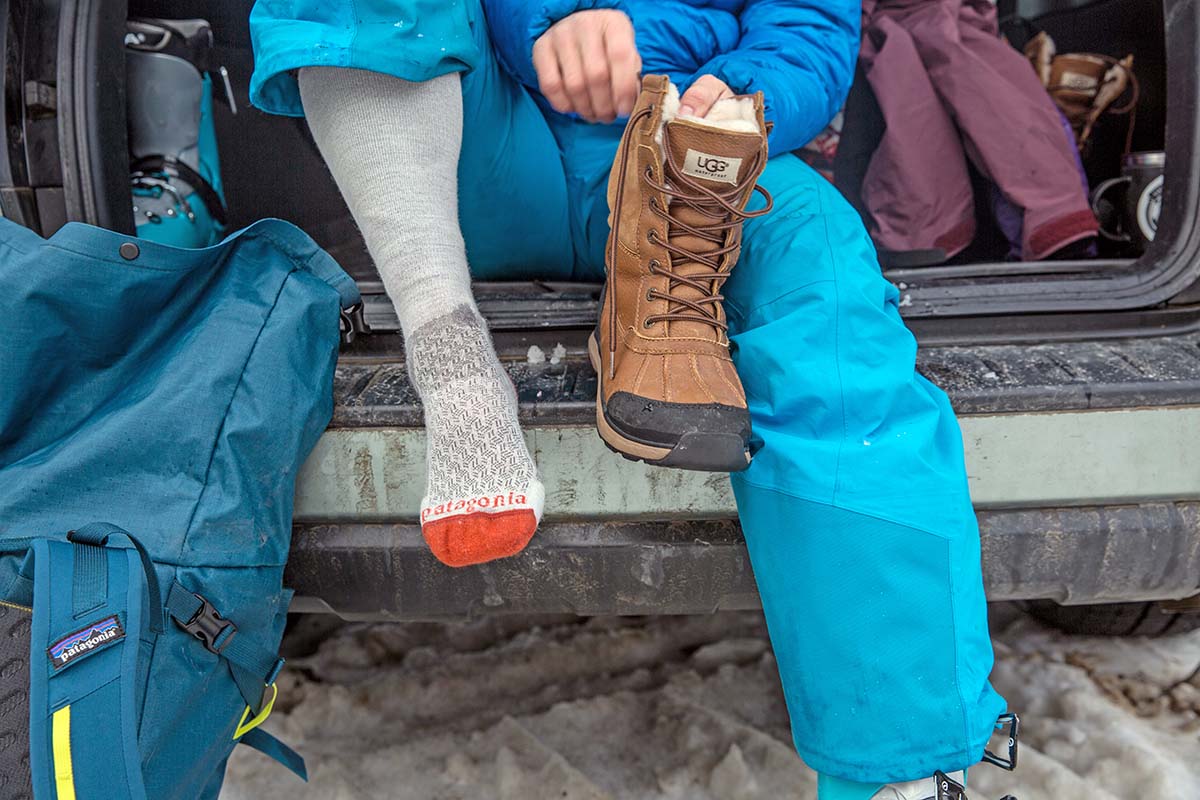
Fit always is an important consideration with footwear, and the same holds true for winter boots. A properly sized boot should be large enough to accommodate your thickest socks without pinching (a fit that is too snug will inhibit circulation and compromise the warmth the boot provides). It’s also important to consider the type of activity: A boot that will only be worn around town, like the Ugg Adirondack, doesn’t have to fit perfectly to perform well (you can err on the side of going a little loose). But for the more hiking-focused models like the Oboz Bridger 7" Insulated, it’s best to get fit dialed in so that you can maximize precision and warmth.
Sizing varies widely between brands and individual models, and we provide as many insights as possible in our product write-ups above. In general, be prepared to order a different size than what you normally would for a pair of everyday sneakers or running shoes. If there aren’t specific recommendations from the manufacturer or you can’t piece together a good idea on fit from reading user reviews, we’ve found the following works pretty well: If you’ll be wearing midweight socks, it’s a good idea to go up a half size. Expedition-level socks are extremely thick, so it’s common to go up a full size in these cases. Again, fit can be tough and it’s always best to try your boots on before buying. But if you’re shopping online, do your research and be prepared to size up in many cases.
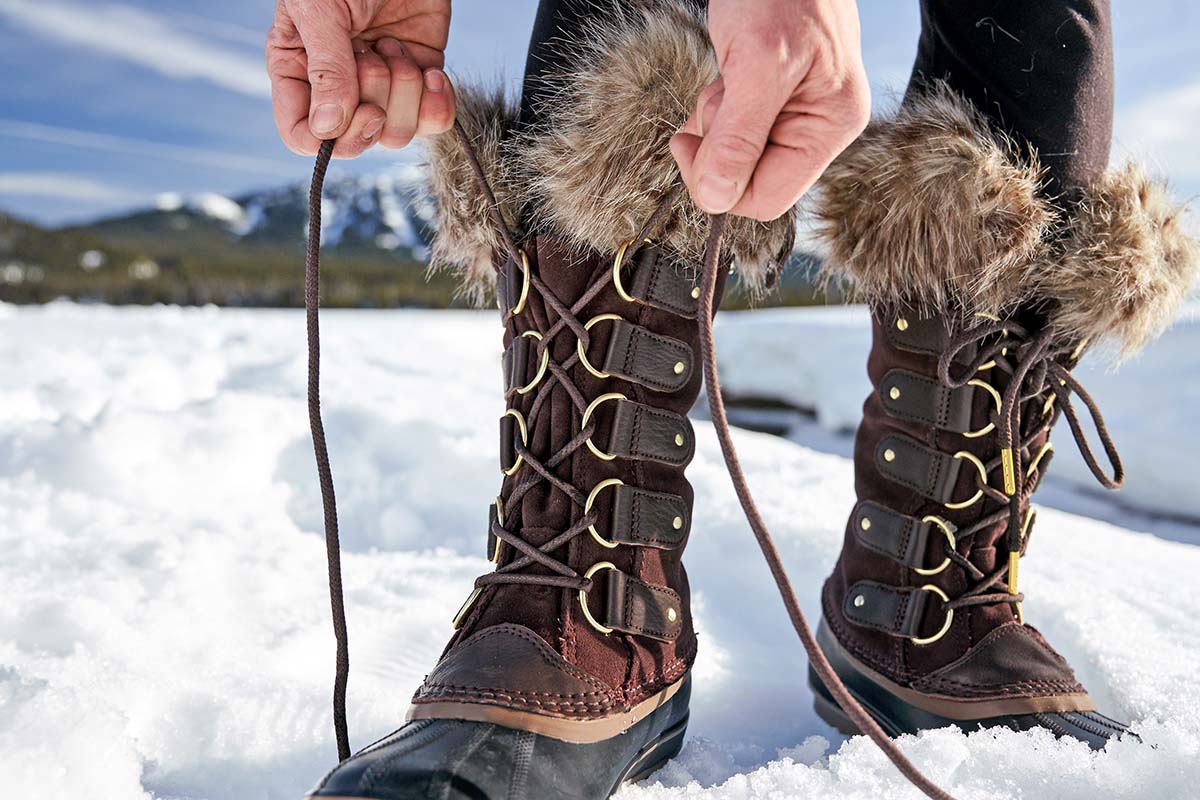
To keep your winter boots lasting as long as possible, it’s worth taking proper care of your investment. For starters, it’s always a good idea to keep them clean to avoid any breakdown in the materials. The grime that you pick up when walking through a slushy parking lot can wreak havoc on a boot if it isn’t cleaned off. Warm water, dish soap, and a simple brush can do the trick in most cases. Further, many of the designs above have leather in the construction, which is a material that benefits from occasional treatment to avoid drying and cracking. A quality sponge-on design like Nikwax’s Conditioner works well on full-grain leather, keeping it in good shape while adding a water-resistant coating to the top. For boots that don’t have a waterproof membrane or coating, it’s a good idea to treat them from the start. Another benefit of adding a leather conditioner right away is that it helps soften the leather and shorten the break-in period.
Winter boots have outsoles designed for walking on snow, but the reality is that even the best rubber compound and tread pattern won’t grip all that well on a sheet of ice. To safely hike or even walk around town if the conditions are really bad, we use an additional traction system (also referred to as a traction device). There are a variety of designs on the market, from chain-style Yaktrax for casual walking to the Kahtoola Microspikes for heavy-duty ice and backcountry use.
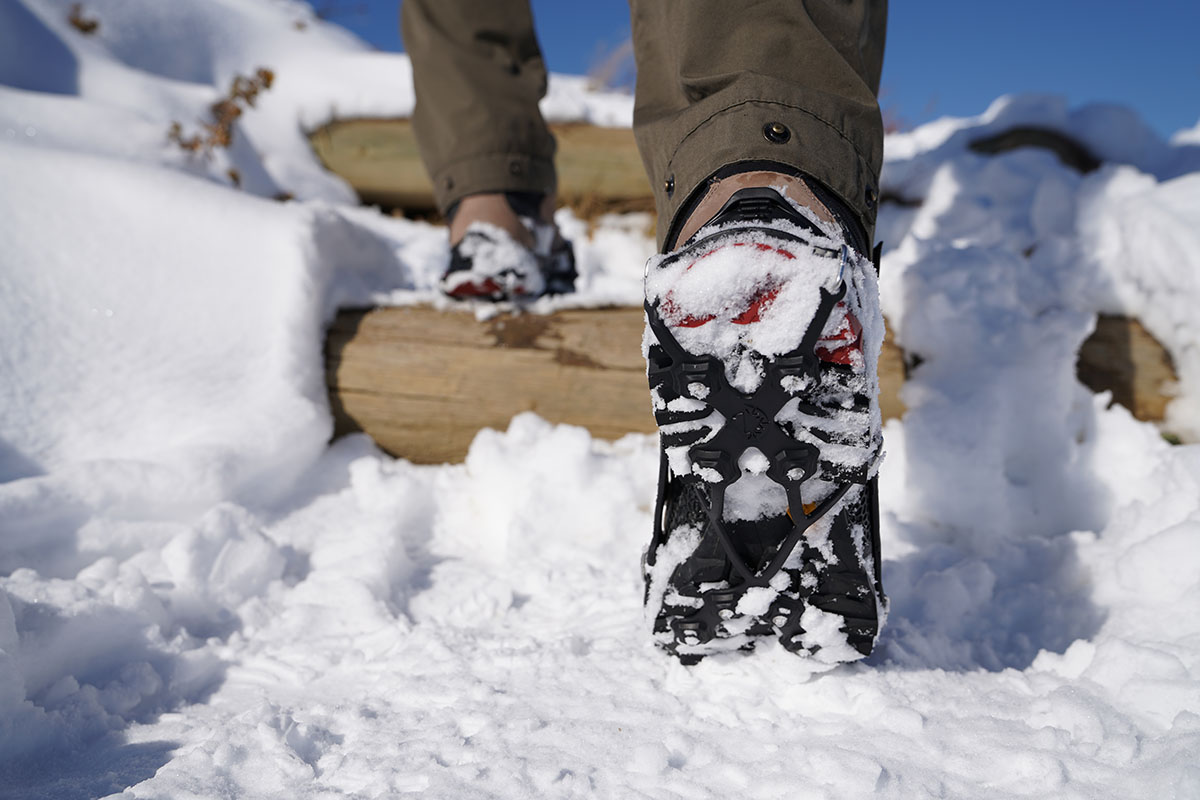
For pairing with winter boots, one of our favorite traction systems is the Kahtoola Nanospikes. Designed for running in winter, we’ve found their minimalist style to work wonderfully on icy sidewalks and trails. The 10 small carbide tips provide excellent grip (we were particularly impressed with their secure traction in freezing rain), and the Nanospikes are lightweight and take up very little space in a bag. The downside with all traction systems is they take a little time to put on and take off and can be overkill for mixed conditions, but they’re the best way to cover ground safely on icy days. For a full breakdown of options, see our article on the best winter traction devices.
Dedicated winter boots offer premium protection and warmth in freezing, snowy conditions, but we often use our regular hiking boots for short and active winter jaunts. For example, if you will be snowshoeing or walking without stopping, uninsulated and waterproof hiking boots with good socks may very well do the trick. One of our favorite models is Salomon’s classic Quest 4, which has a durable, water-shedding exterior and Gore-Tex bootie that offers lightweight warmth. To be clear, this is a good option for trips when you will be on the go the whole time and the weather isn’t particularly frigid. If you’ll be stopping or out for long stretches of time, it’s safest to stick with an insulated winter-specific design.
Back to Our Top Women's Winter Boot Picks Back to Our Women's Winter Boot Comparison Table